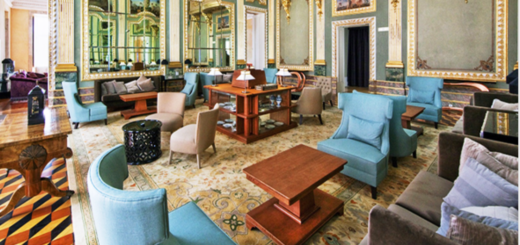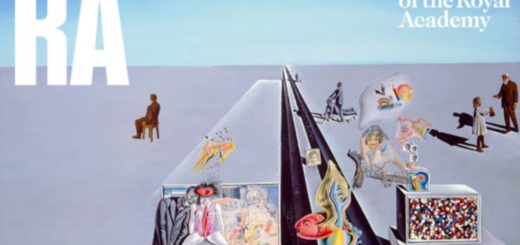HOT BUILDINGS and HOTTER CURRIES: Cape Town’s colourful BO-KAAP
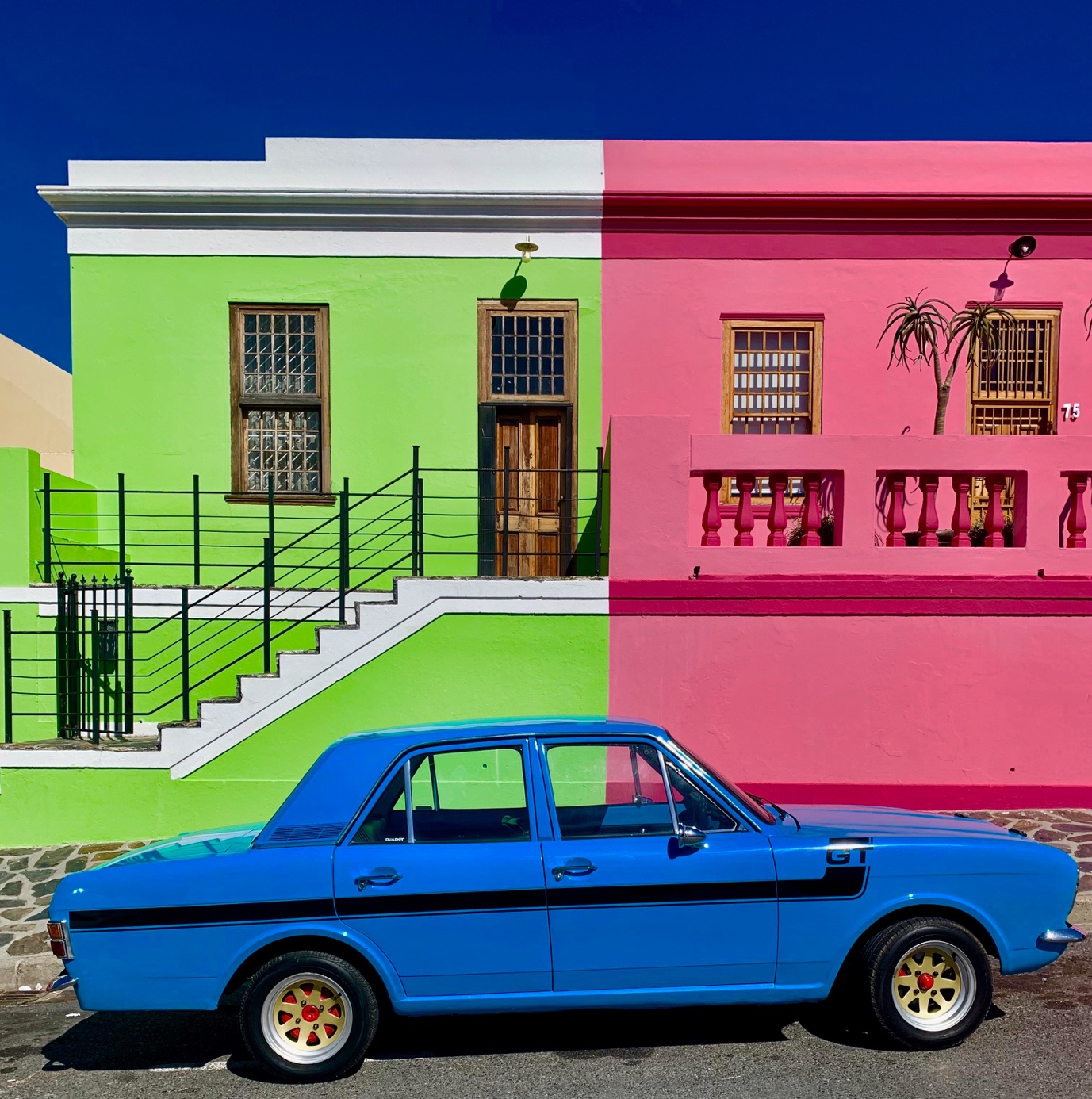
Image Credit Cécile Paul
Crawling its way up onto steep Signal Hill, then rambling down towards the city centre of Cape Town is an area of cobbled streets with eye-poppingly vibrant houses that visitors to the Mother City find intoxicatingly alluring.
Welcome to Cape Town’s inimitable Bo-Kaap (‘Above the Cape’).
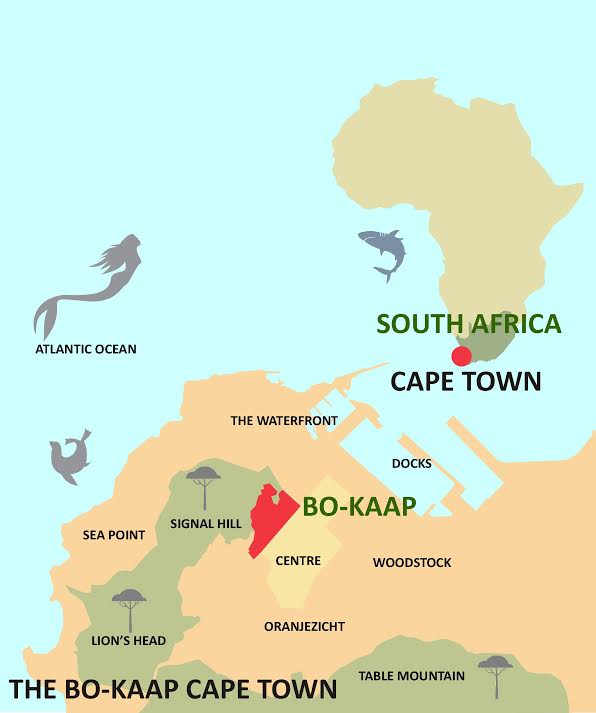
Graphics Brian Paul | A map pin-pointing the Bo-Kaap (in red) within the city of Cape Town, a 2 minute walk from the heart of the city

Image Credit Cécile Paul | Roads leading up Signal Hill
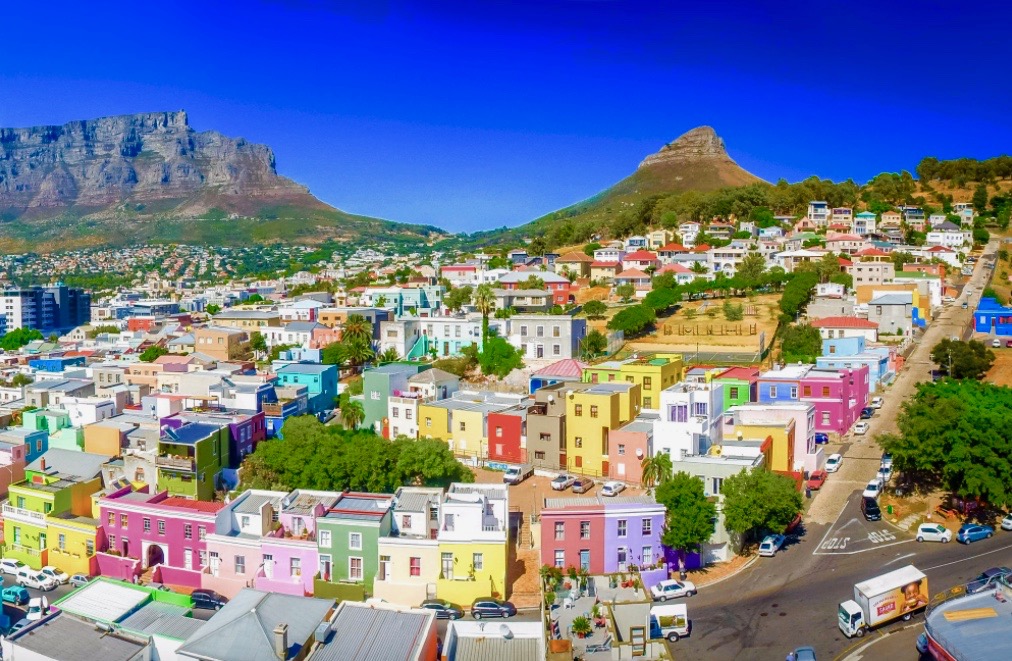
Image Credit Tripadvisor | A bird’s eye view of this colourful area nestled at the foot of Signal Hill
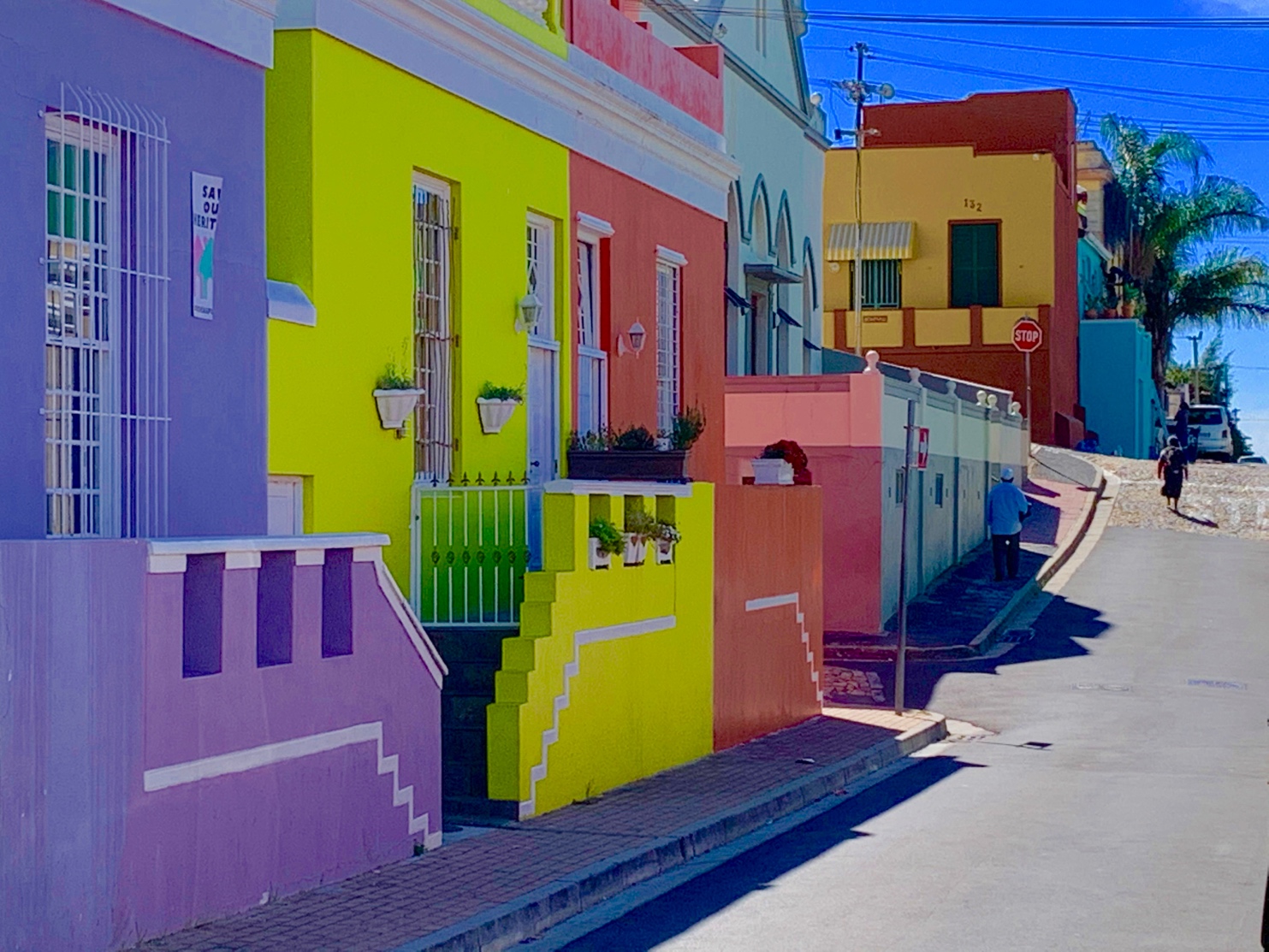
Image Credit Cécile Paul | The area is filled with tiny hillocks before it extends onto the steep Signal Hill
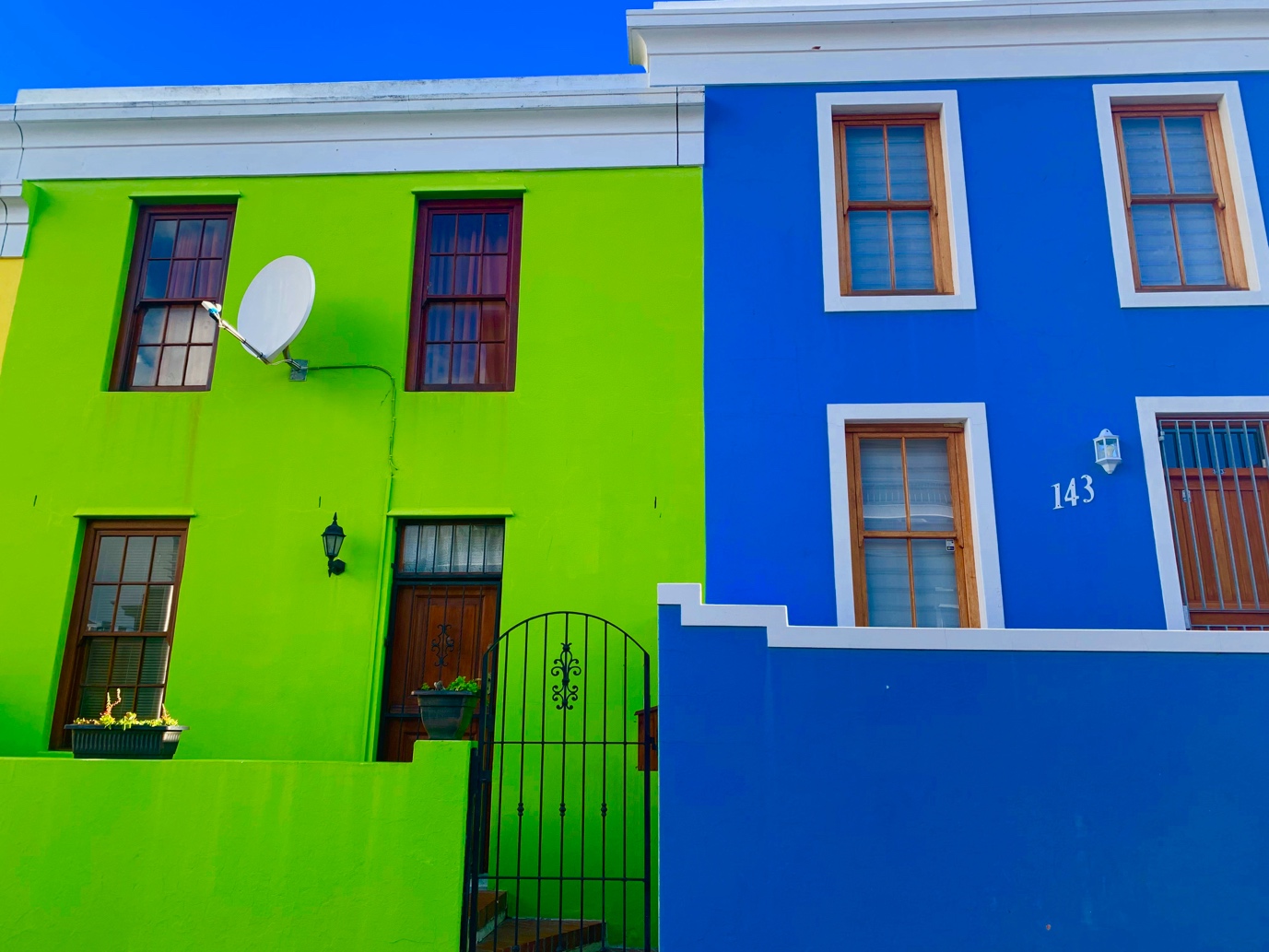
Image Credit Cécile Paul
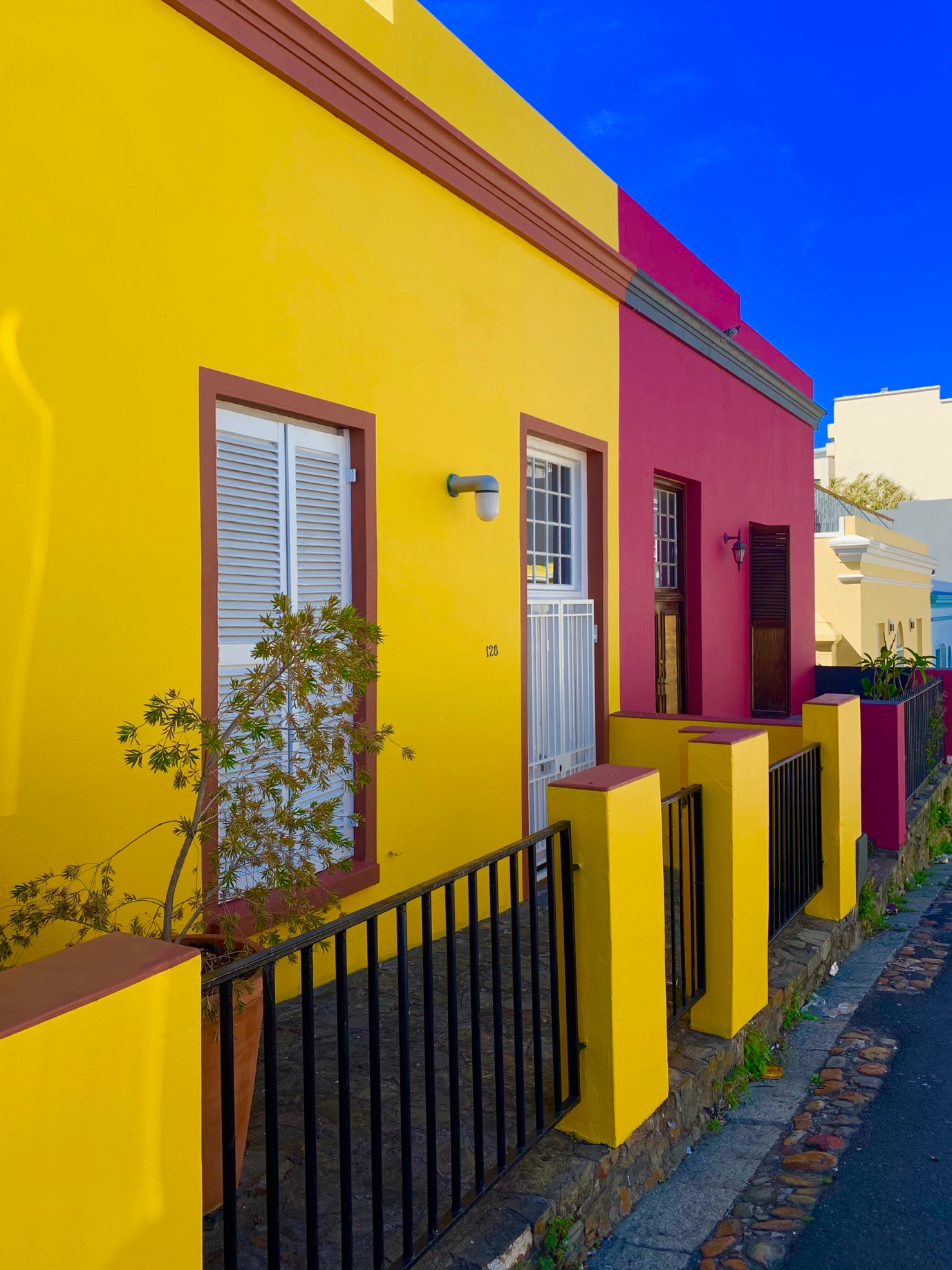
Image Credit Cécile Paul
The quaint streets are lined with picturesque, brightly painted houses that rub shoulders with tiny little mosques, indie restaurants and shops selling traditional Malay curries and sweets, coffee and spices. At any given point during the day the area is a melting pot of intense energy, a flurry of activity with locals going about their day-to-day business and tourists – involuntarily drawn to the vibrancy and unique character of the area – posing for photographs in front of the brightly coloured facades of the houses. There always seem to be umpteen fashion shoots happening in this magical neighbourhood, and once you’ve scrolled through the kaleidoscope of images in this article, you’ll understand just why!

Image Credit Cécile Paul | A mural – one of many in this colourful neighbourhood, a little mosque in the background
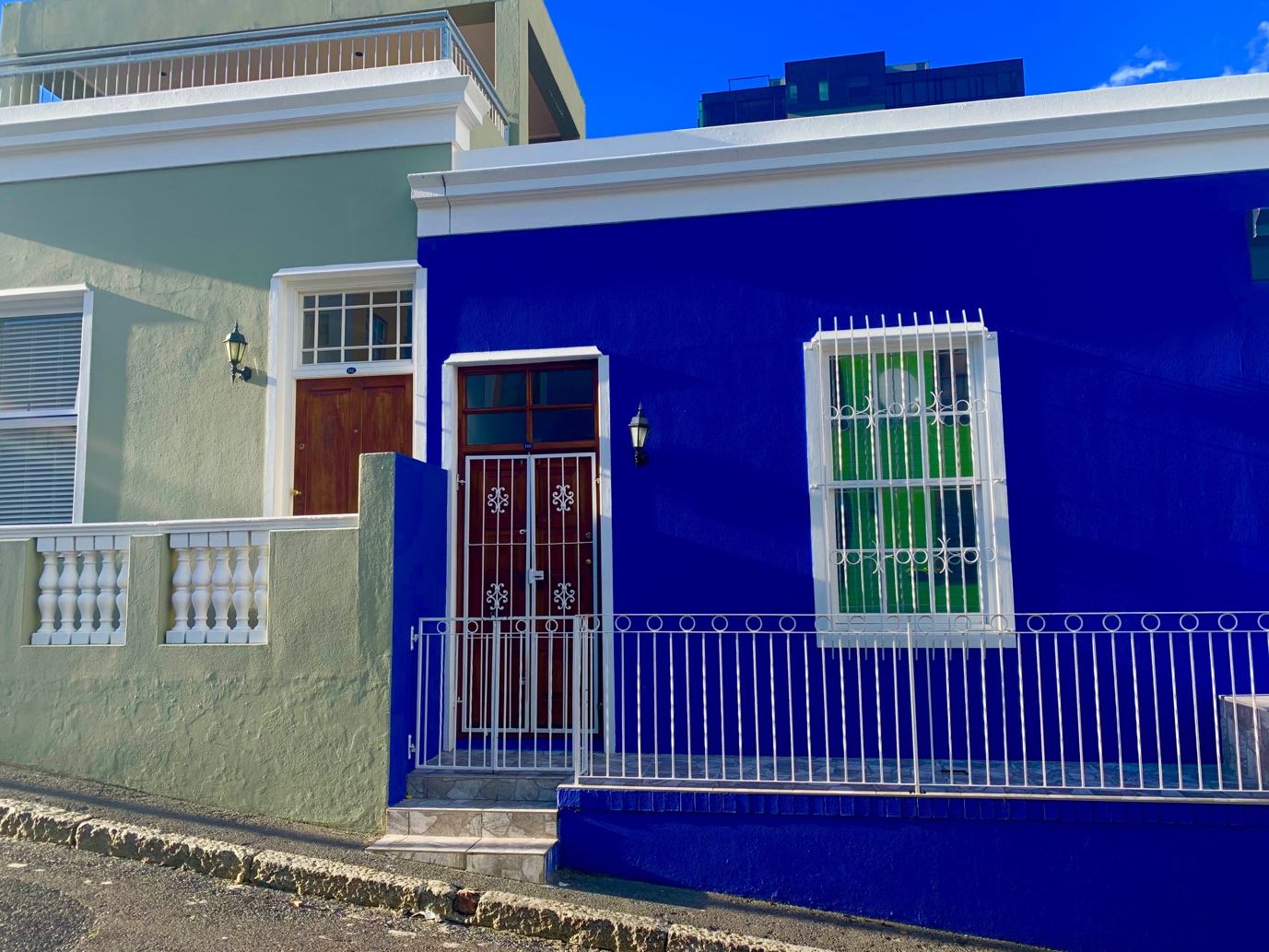
Image Credit Cécile Paul
A large proportion of the city’s Muslim population have historically been living here (and still is) having arrived from the Malay Archipelago (then known as the East Indies) before the end of the 17th Century. Inspired by formal Dutch architecture, with sturdy front doors, decorative gates and trelliswork, these houses were initially painted white (there was a rule back then that all houses aligned to cobble stone roads had to be painted white). It was only after slaves were allowed to purchase houses that homeowners started to paint their houses in bright colours, to express their individuality and as a metaphor for their newly acquired freedom. Today residents are encouraged to go wild with the Pantone colours, to brilliant effect!

Image Credit Cécile Paul

Image Credit Tingo Mtambalika | The bluest of skies
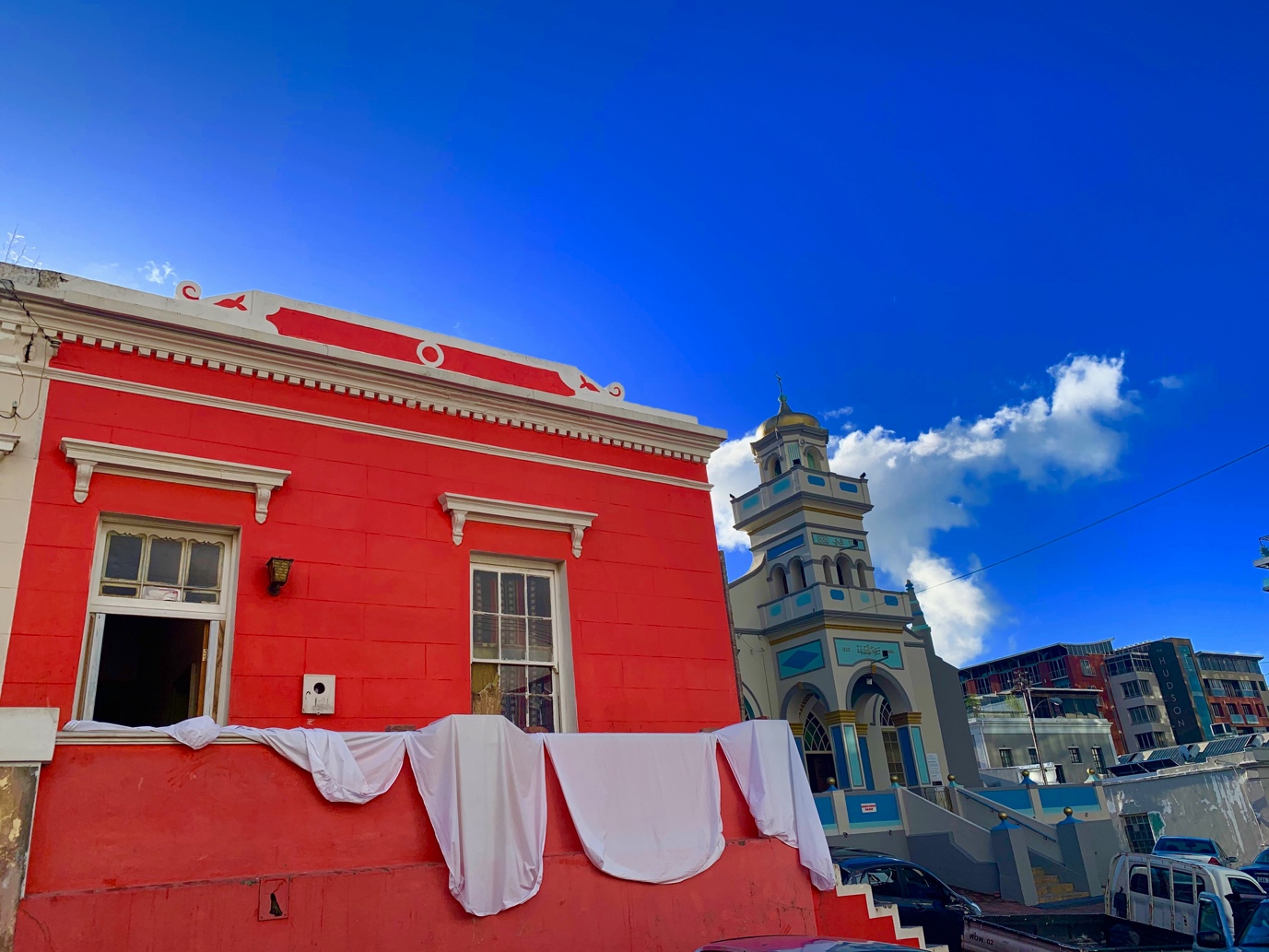
Image Credit Cécile Paul | Washing day! One of the numerous quaint mosques in the background
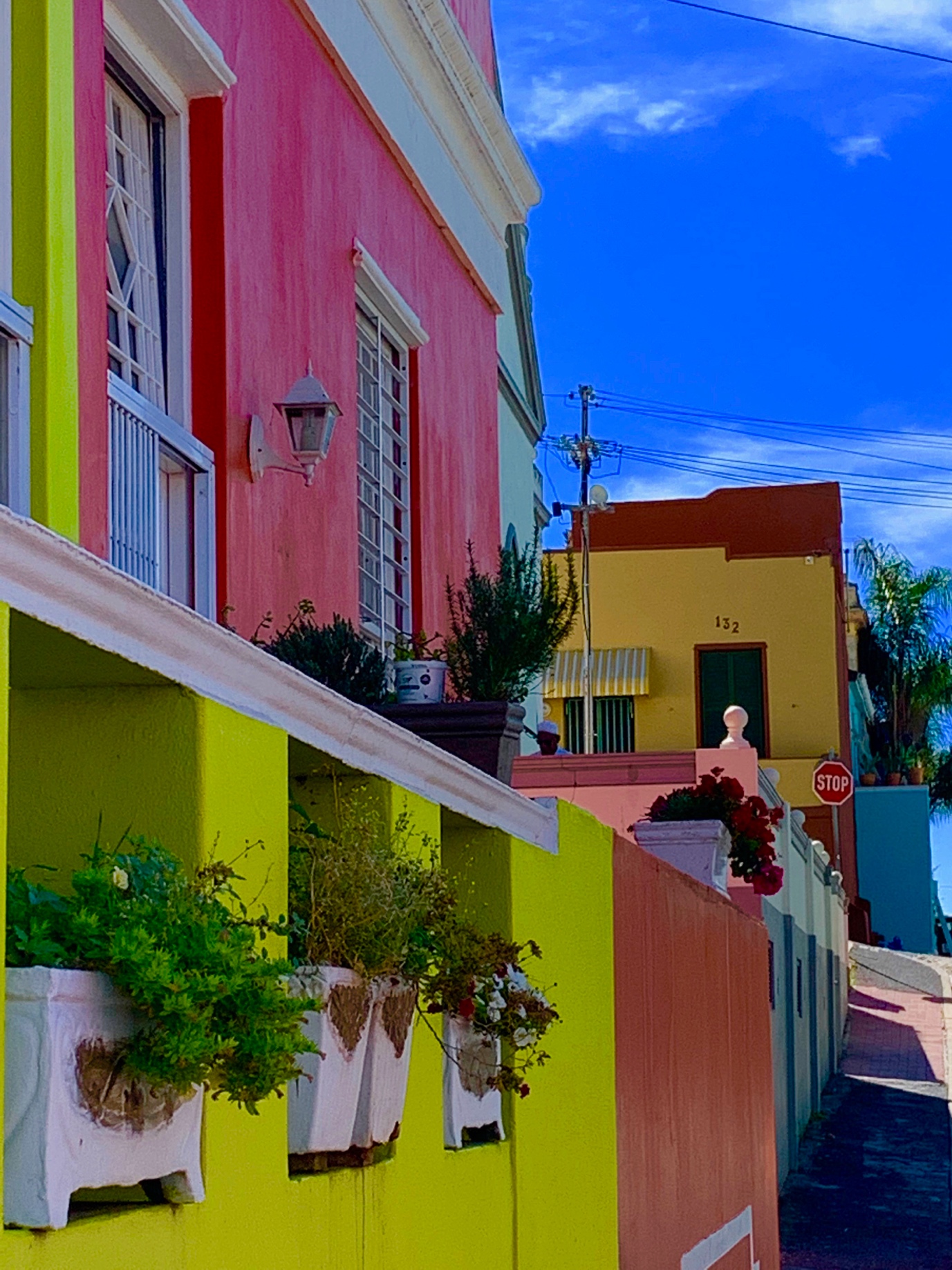
Image Credit Cécile Paul
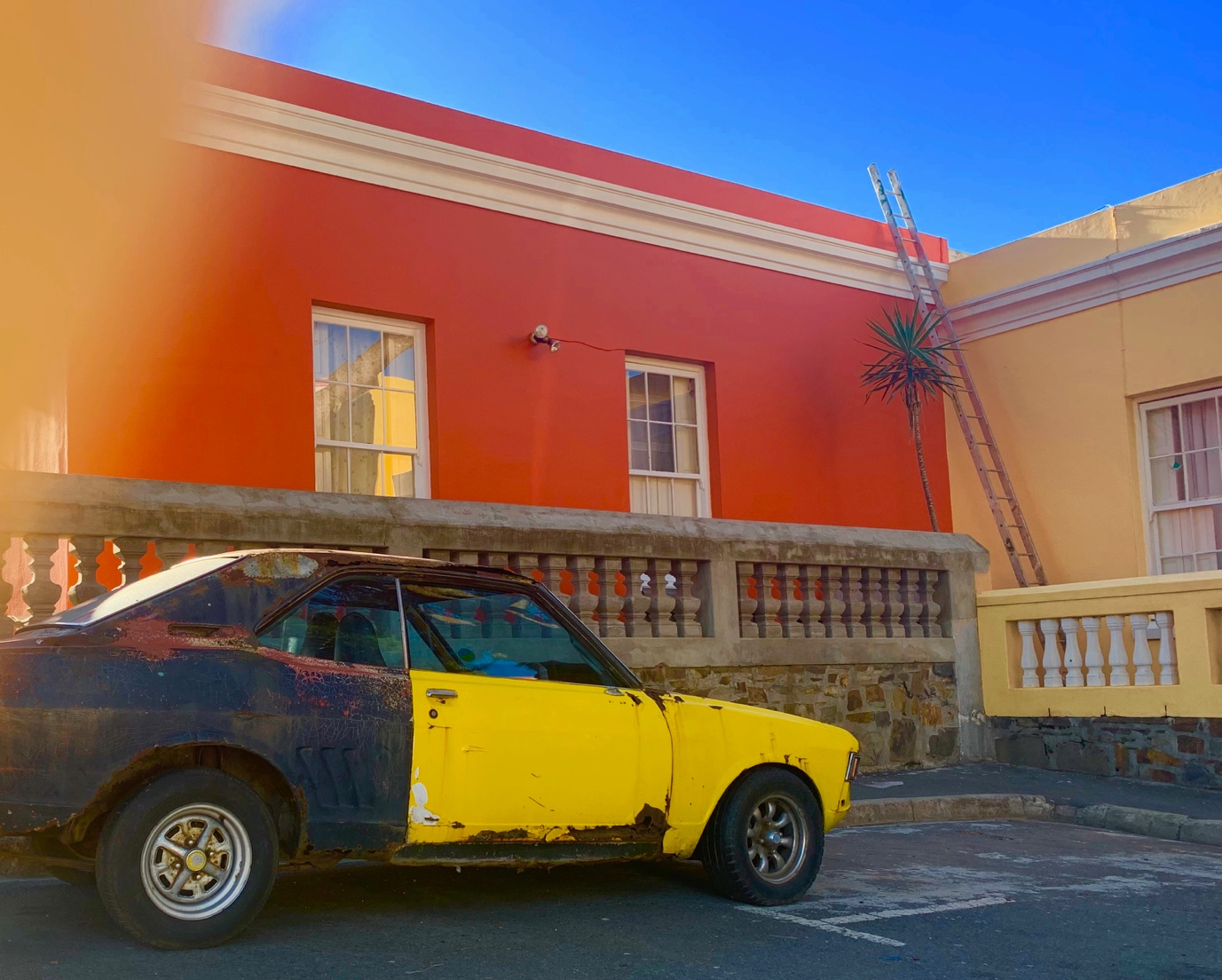
Image Credit Cécile Paul
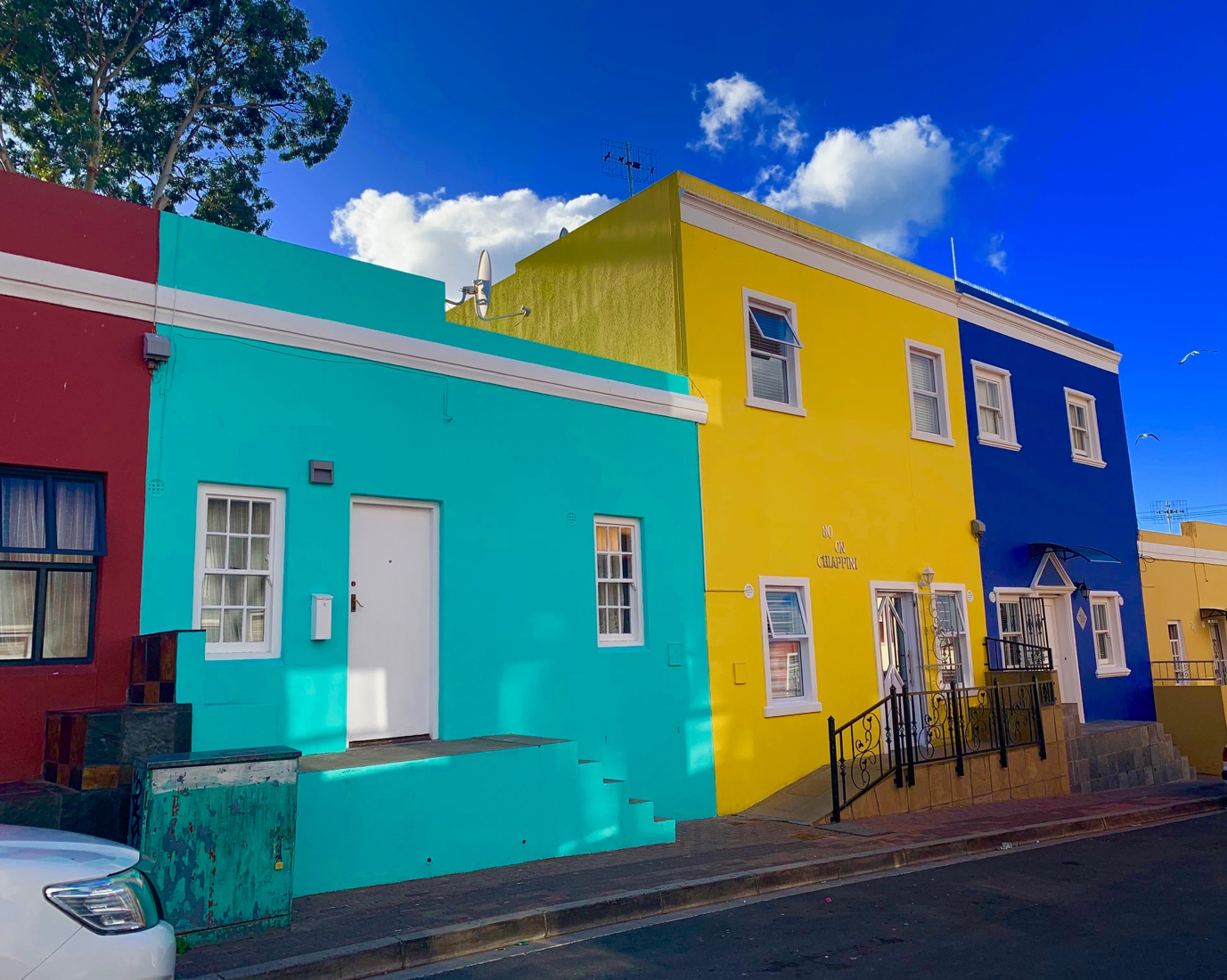
Image Credit Cécile Paul
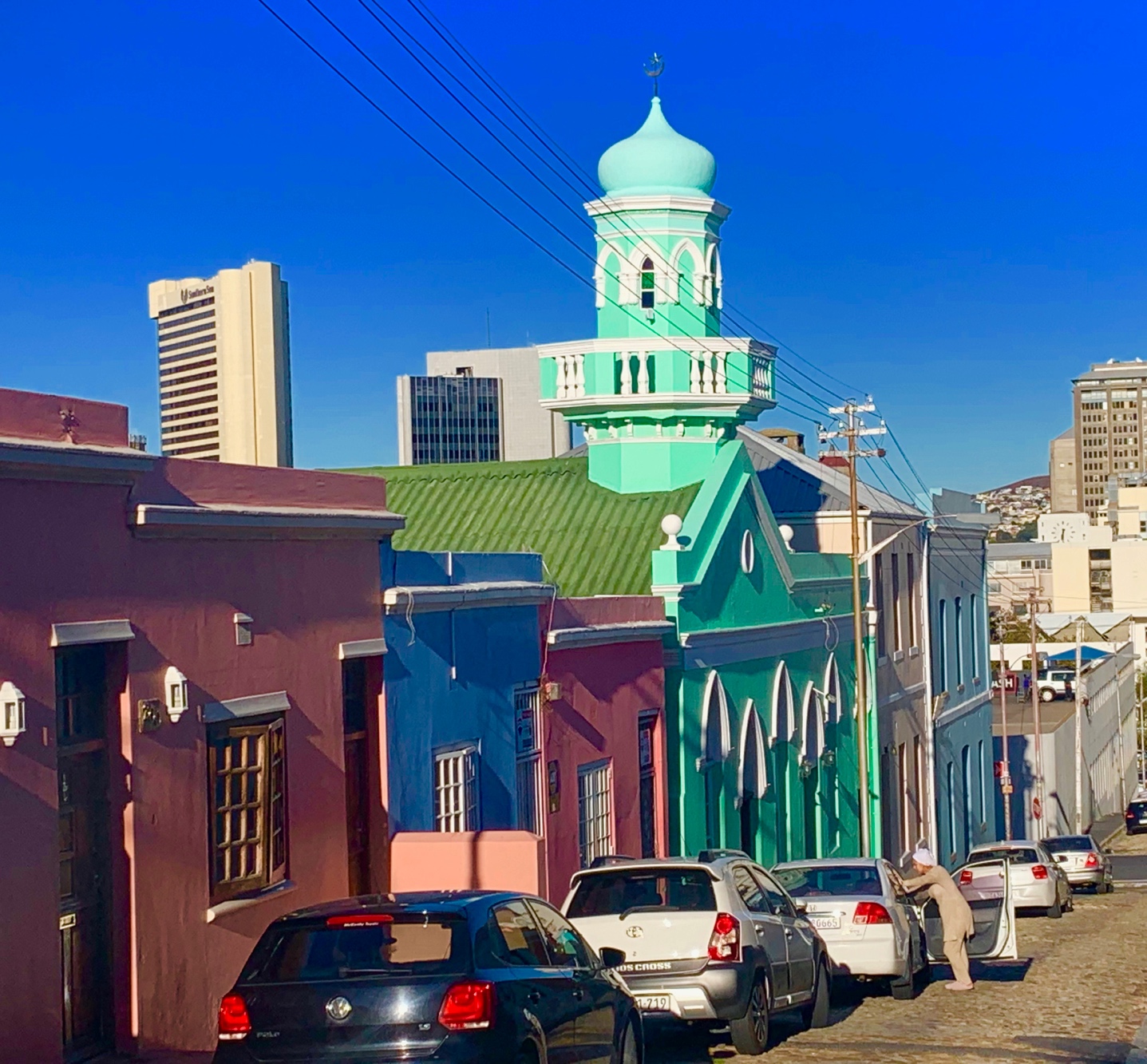
Image Credit Cécile Paul | A cobbled street running down towards the city centre
A tantalizing journey for all the senses awaits one in this extraordinary quarter of town as
food plays an integral role in Malay culture, going back as far as 1658, when the first slaves who arrived in the Cape brought back with them recipes and spices from the East. Today Malay food incorporates a mix of exotic and distinctive flavour mixes including cardamom, cloves, cinnamon, ginger, chilli, coriander and cumin. Malay food is a fundamental part of South Africa’s vast culinary heritage and one of the nation’s favourite types of cuisine – wholesome, comforting, somewhat spicy, somewhat sweet, always alluring.
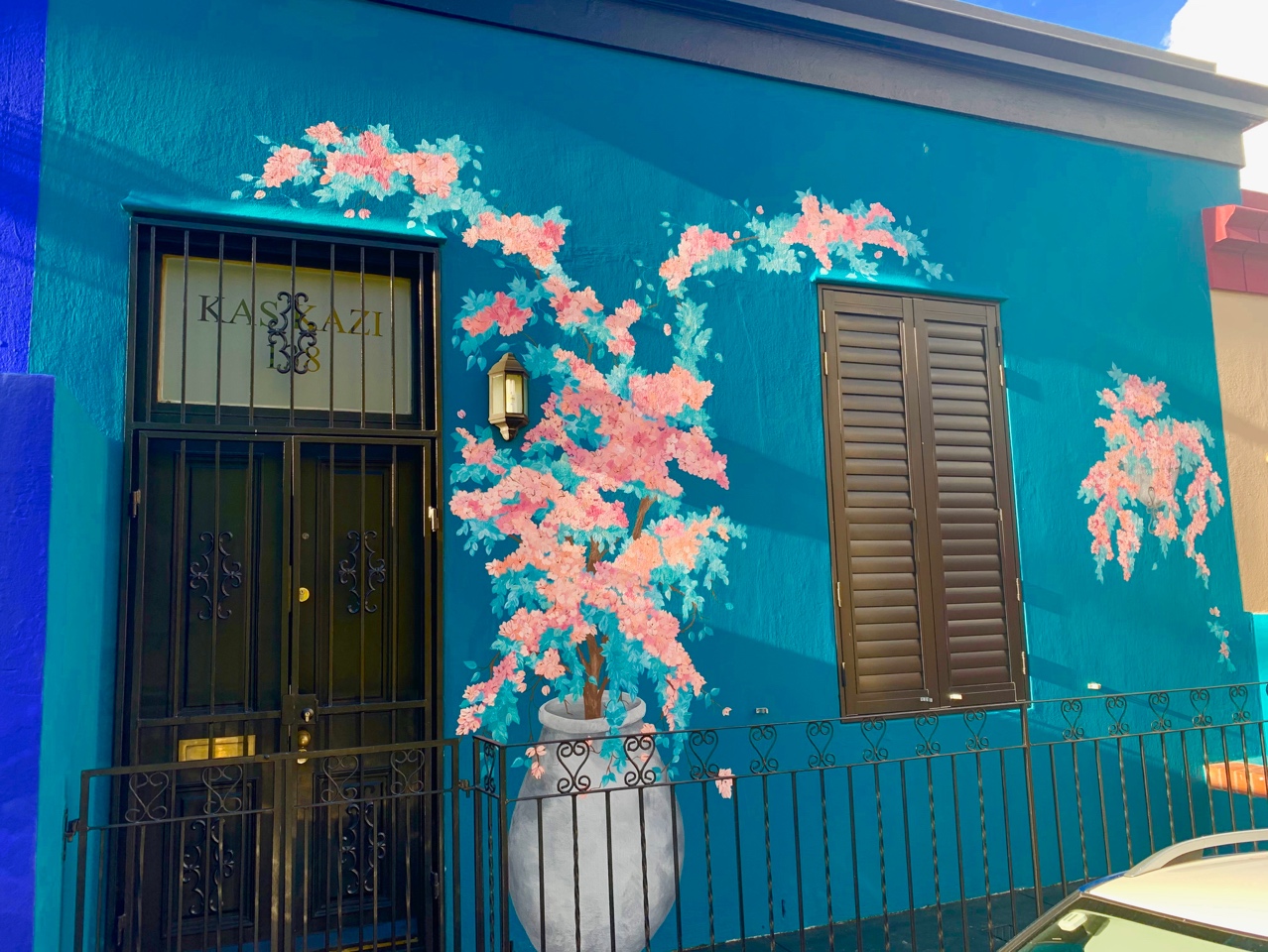
Image Credit Cécile Paul
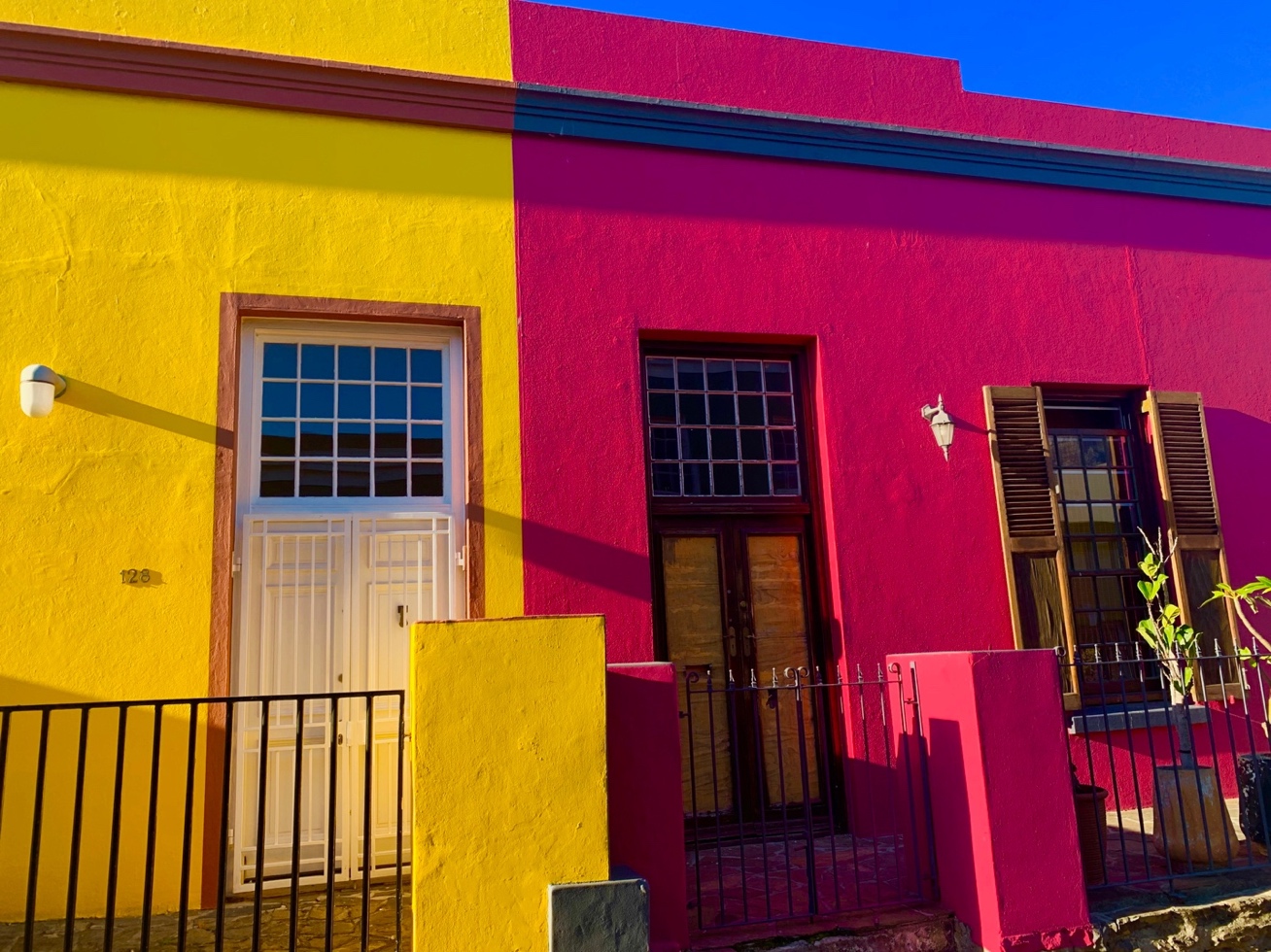
Image Credit Cécile Paul
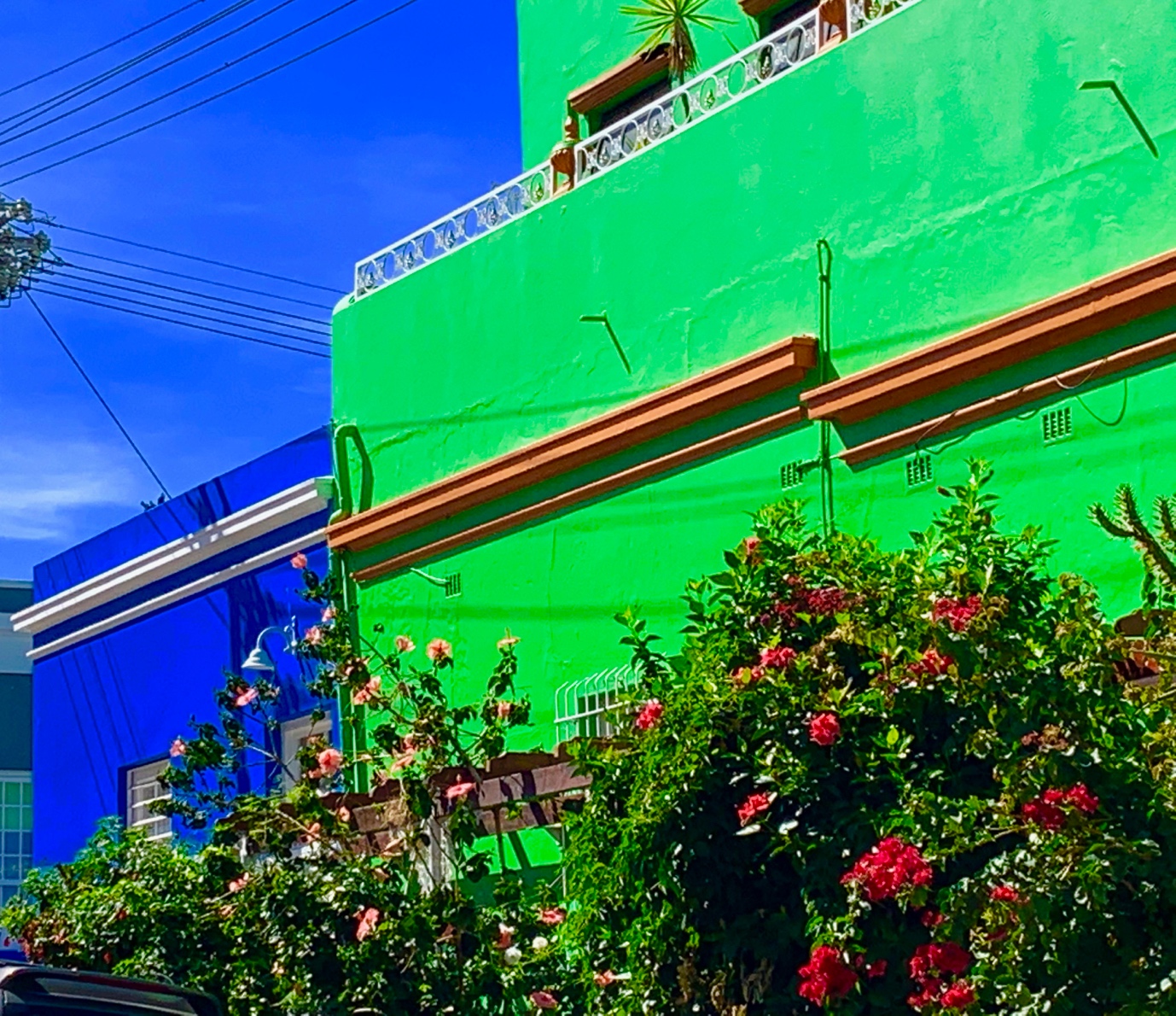
Image Credit Cécile Paul
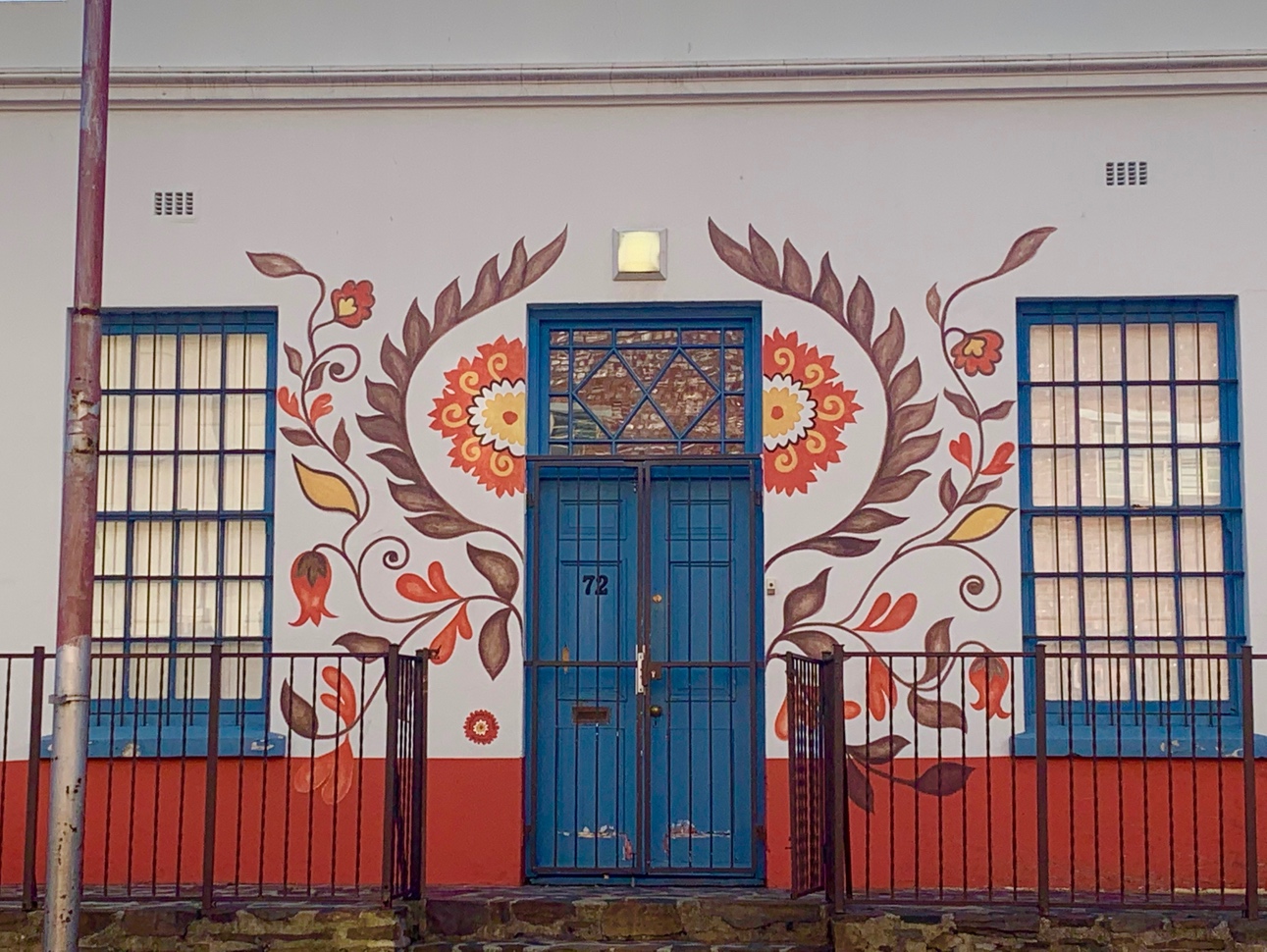
Image Credit Cécile Paul
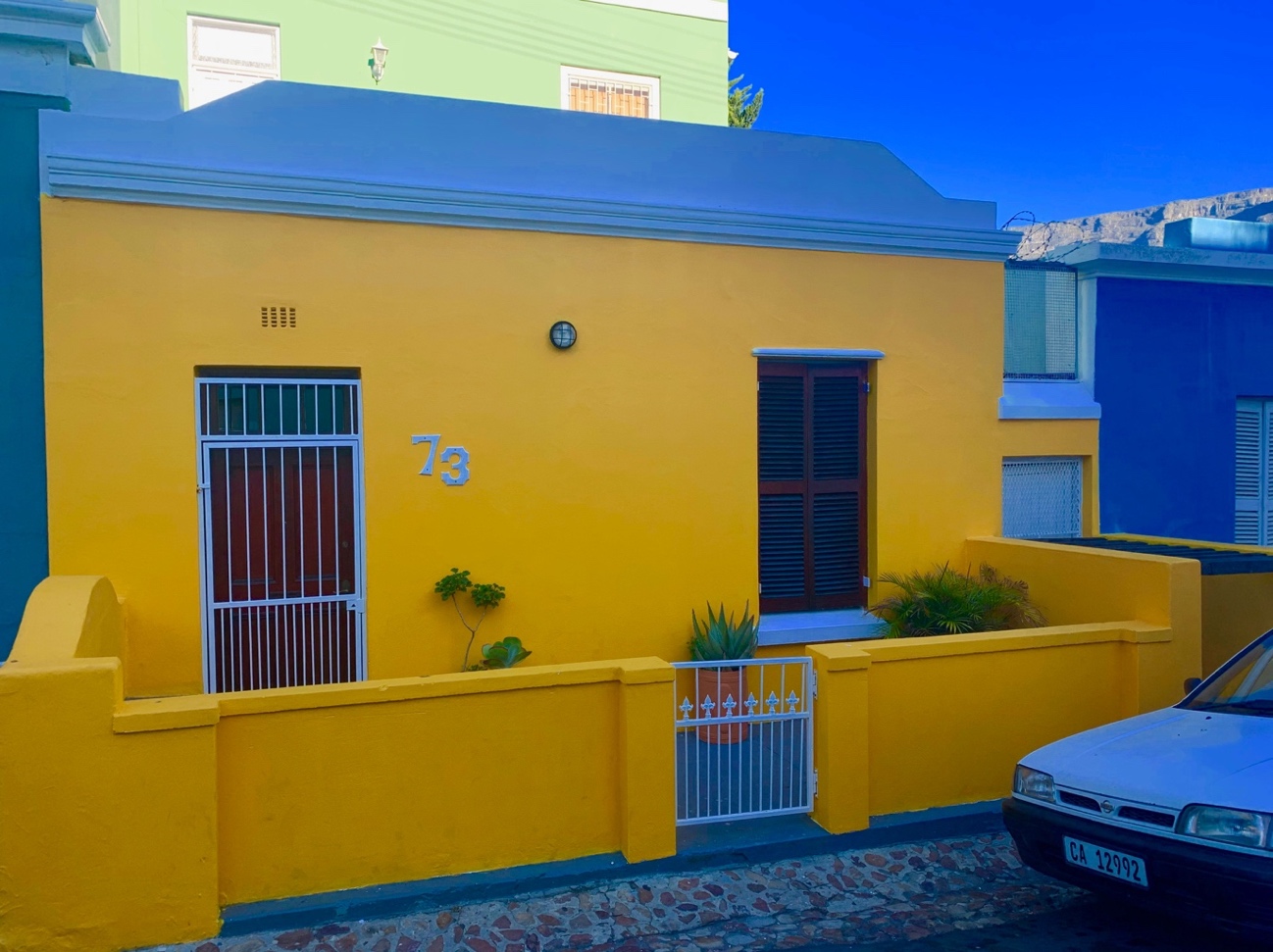
Image Credit Cécile Paul
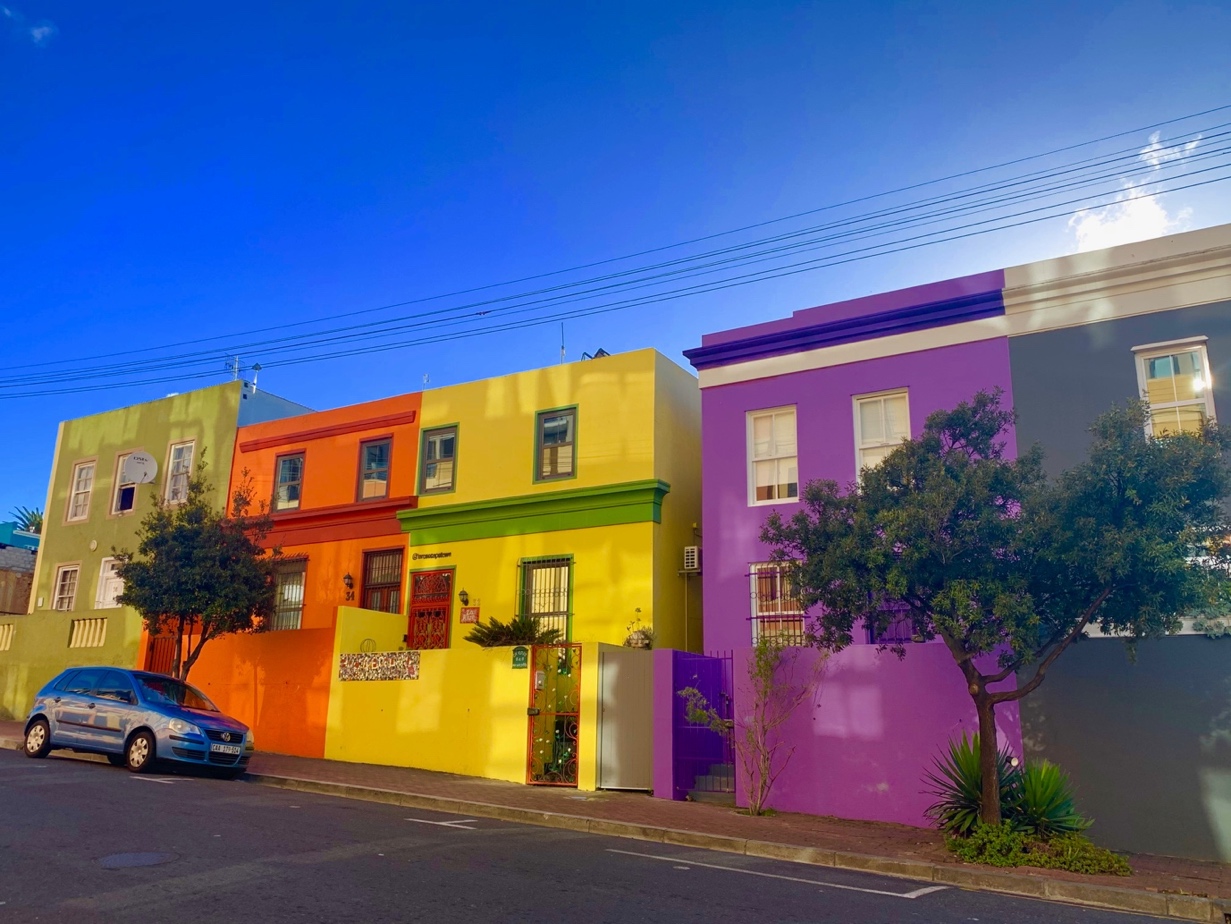
Image Credit Cécile Paul
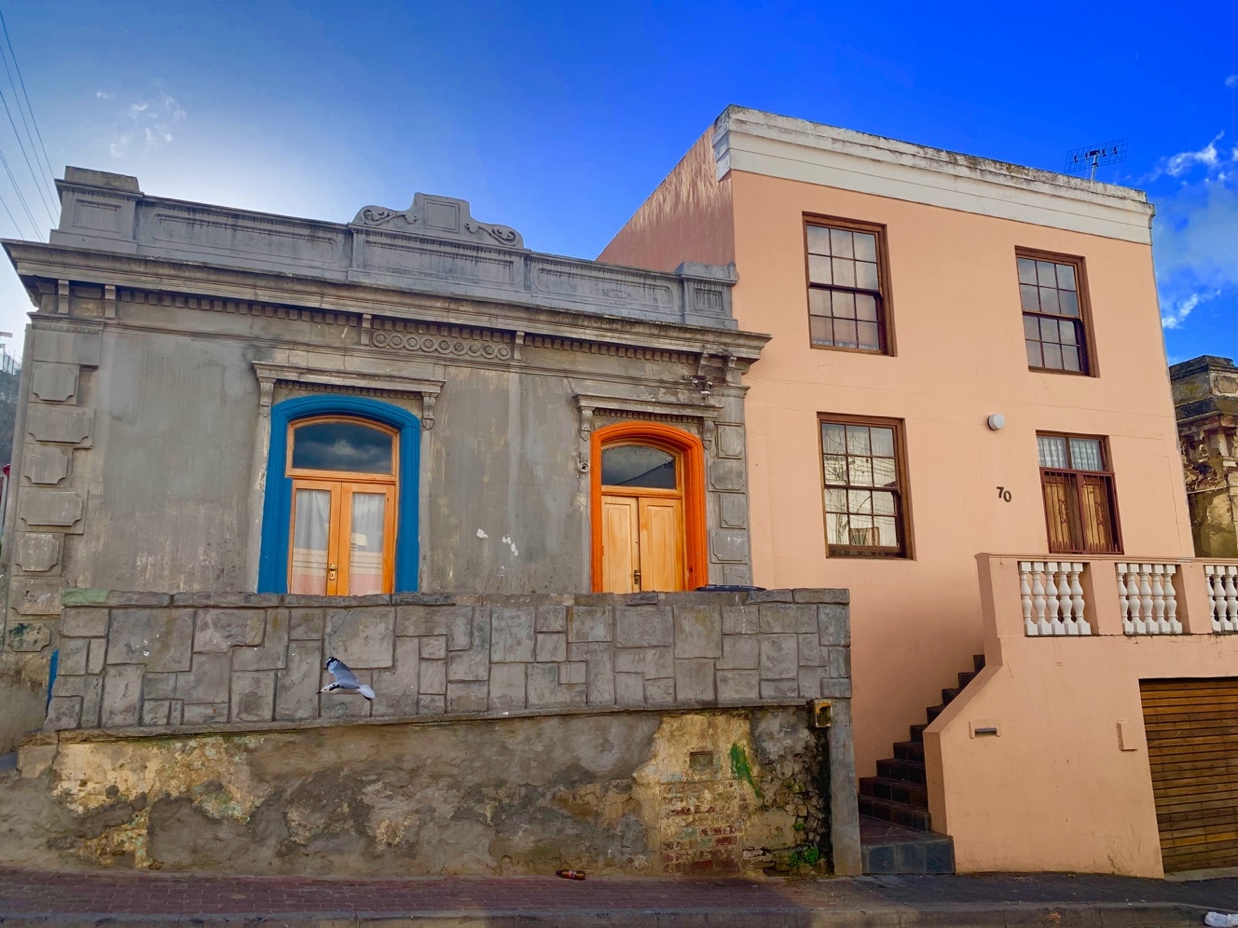
Image Credit Cécile Paul | Waiting for paint!
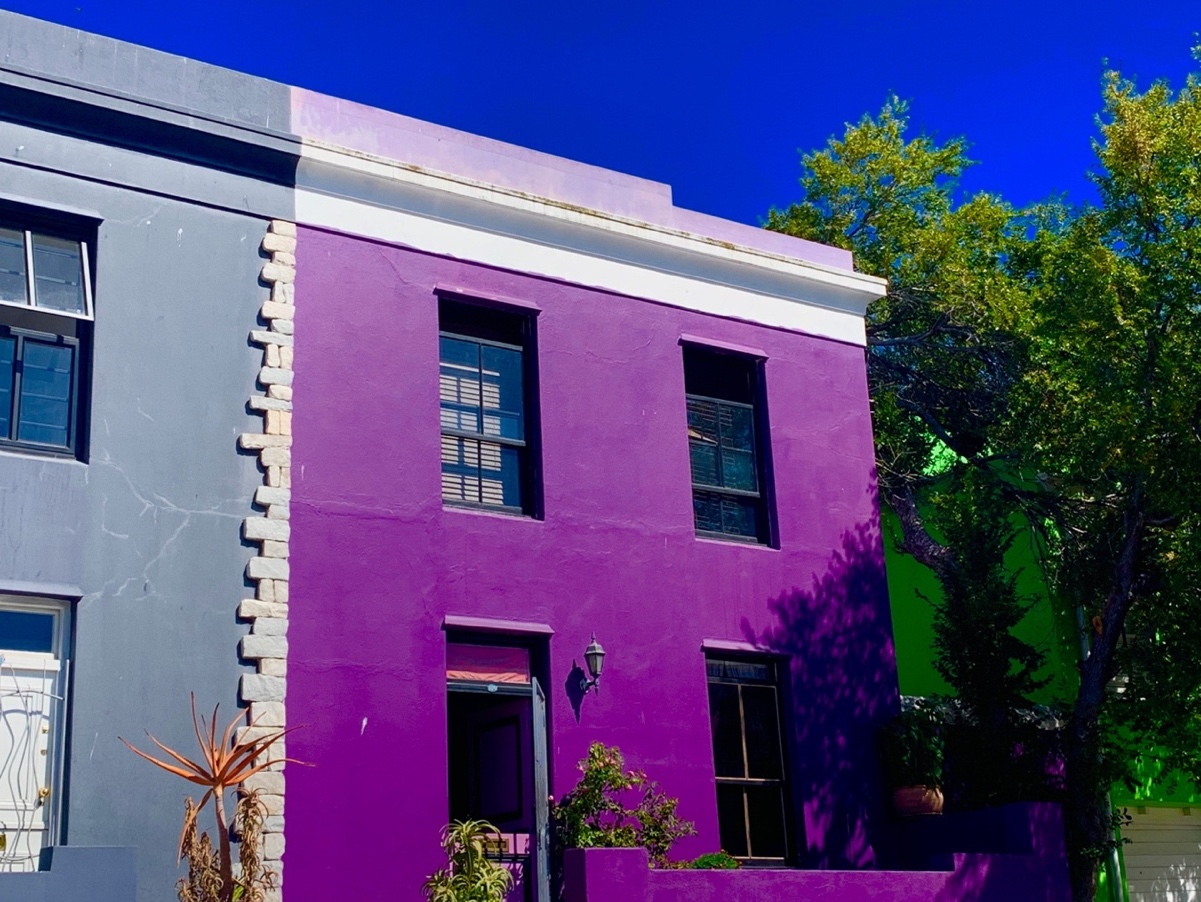
Image Credit Cécile Paul
As you meander past little restaurants and spice shops you’ll get tantalizing scents of the exotic dishes on offer – these include traditional dishes like curries in every shape or form (made with the very authentic ‘secret’ spice mixes that are customary to the Bo-Kaap), stews, samoosas, rotis, pickled fish, biryani and sweet dishes like koesisters (‘cake sisters’ -the nation’s favourite confectionary made of deep-fried dough, then steeped in sugar and dusted with coconut – utterly divine and exclusively for those with a super sweet tooth!).
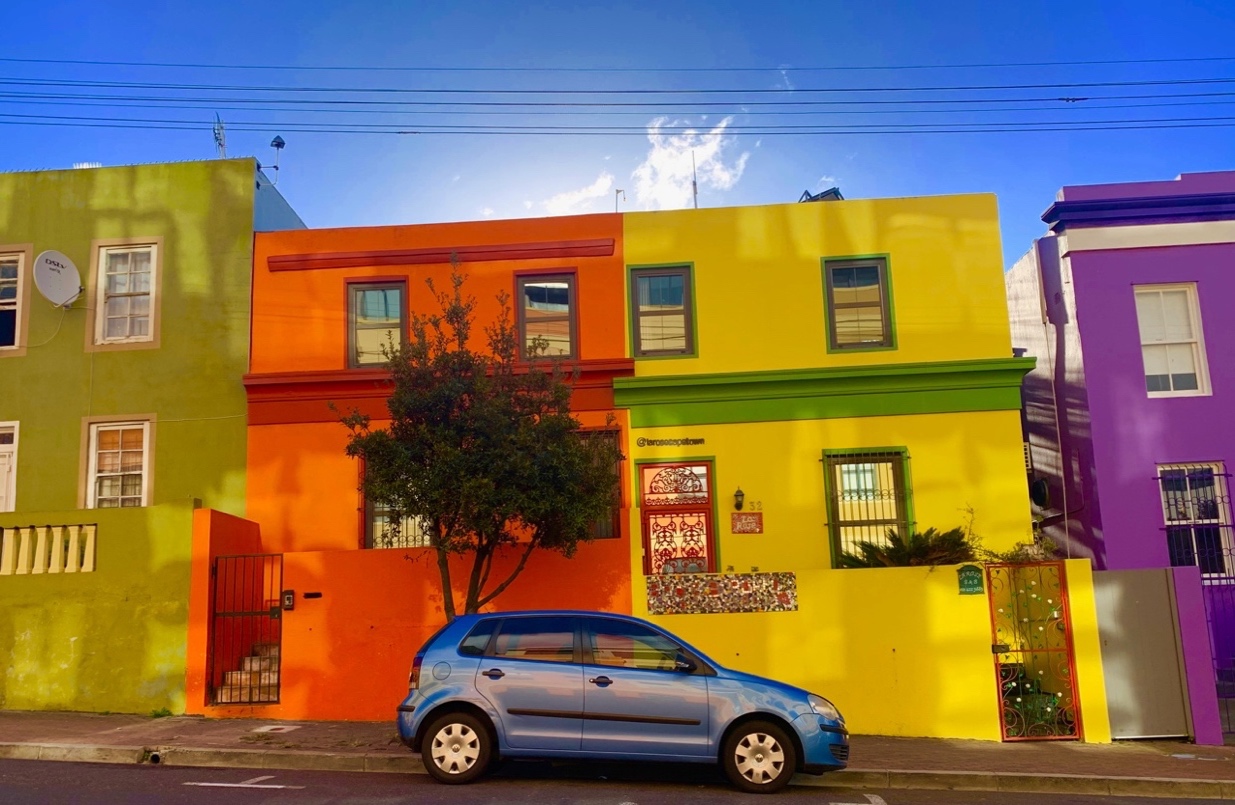
Image Credit Cécile Paul
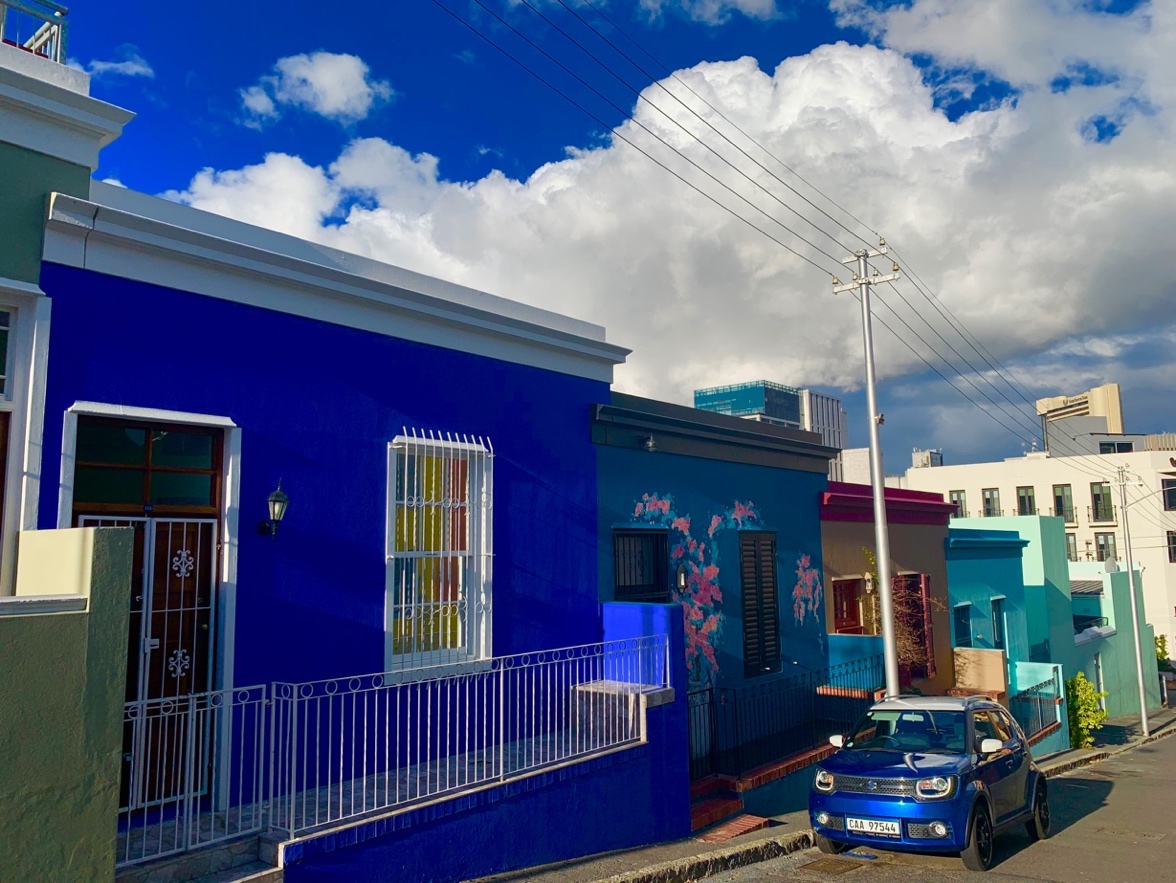
Image Credit Cécile Paul | True blue
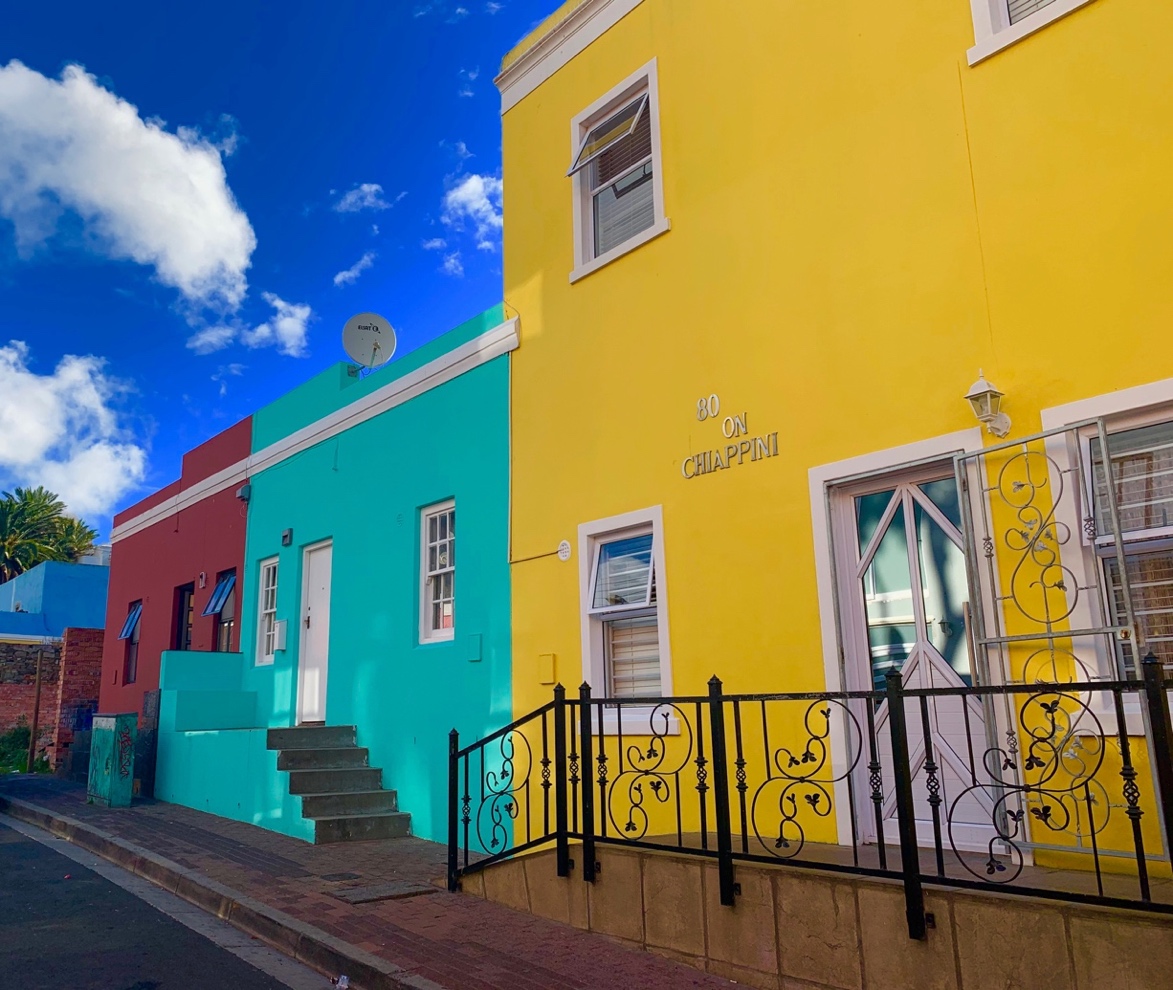
Image Credit Cécile Paul | Primary colours
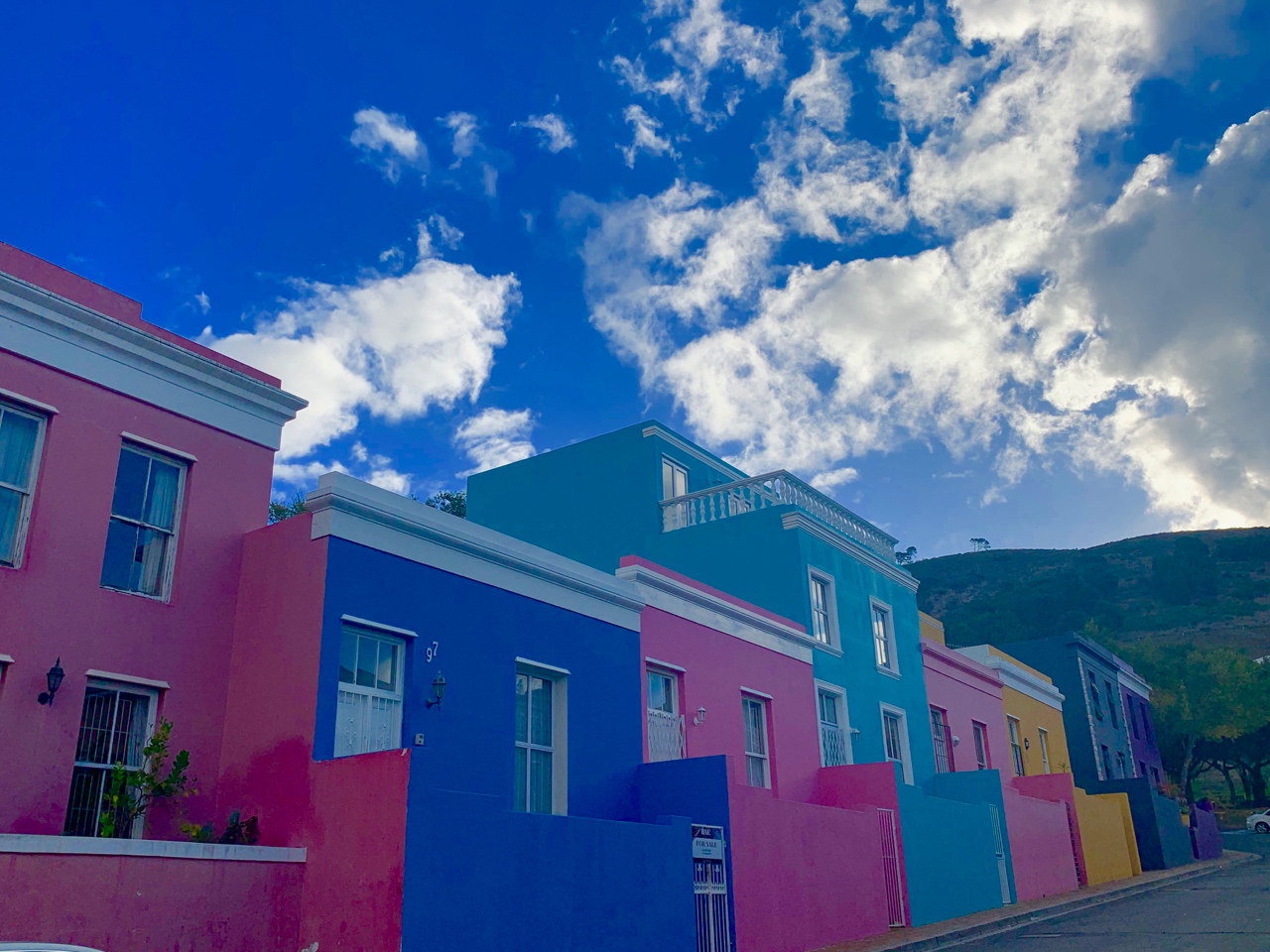
Image Credit Cécile Paul
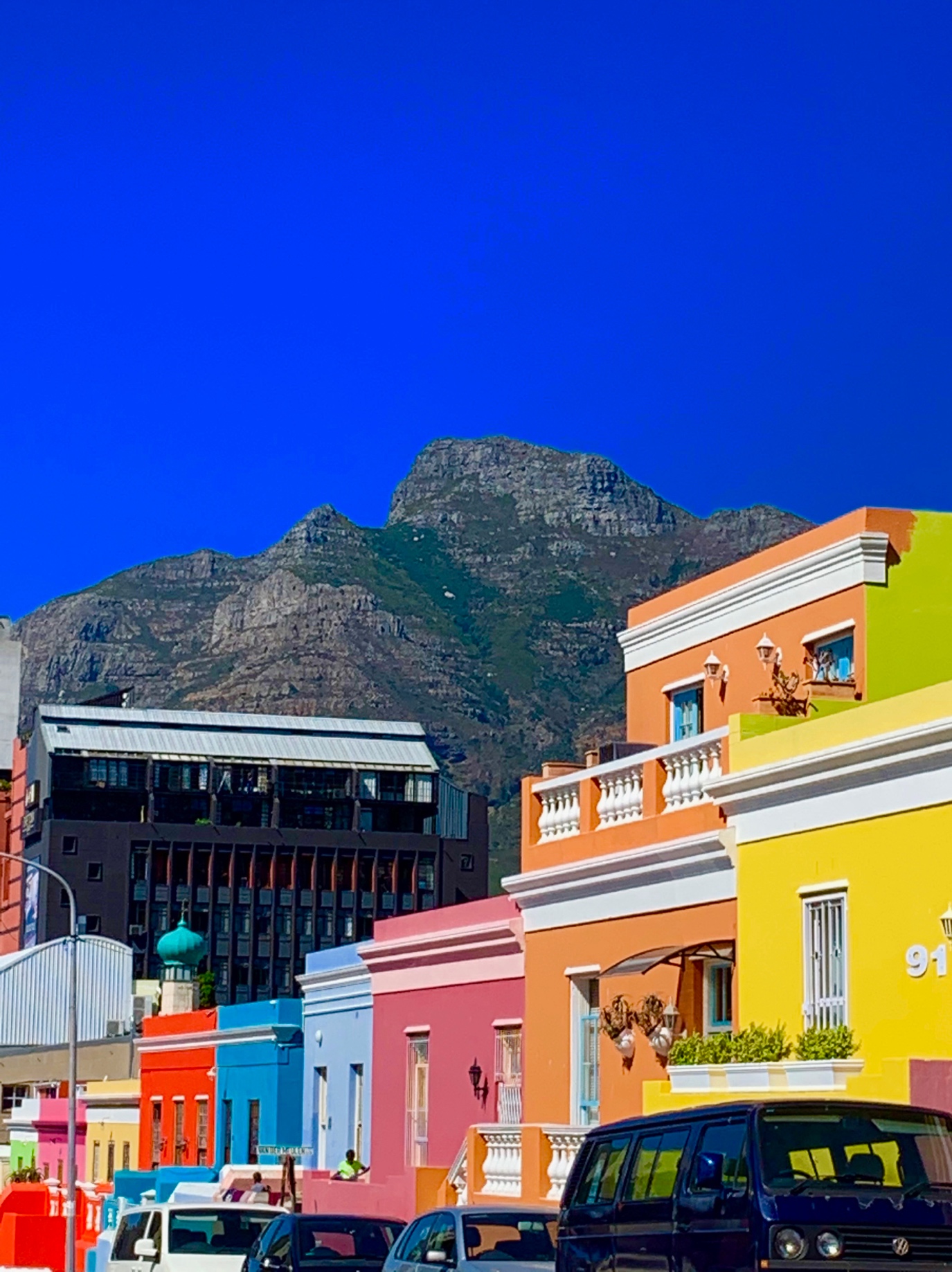
Image Credit Cécile Paul | Devil’s Peak in the background
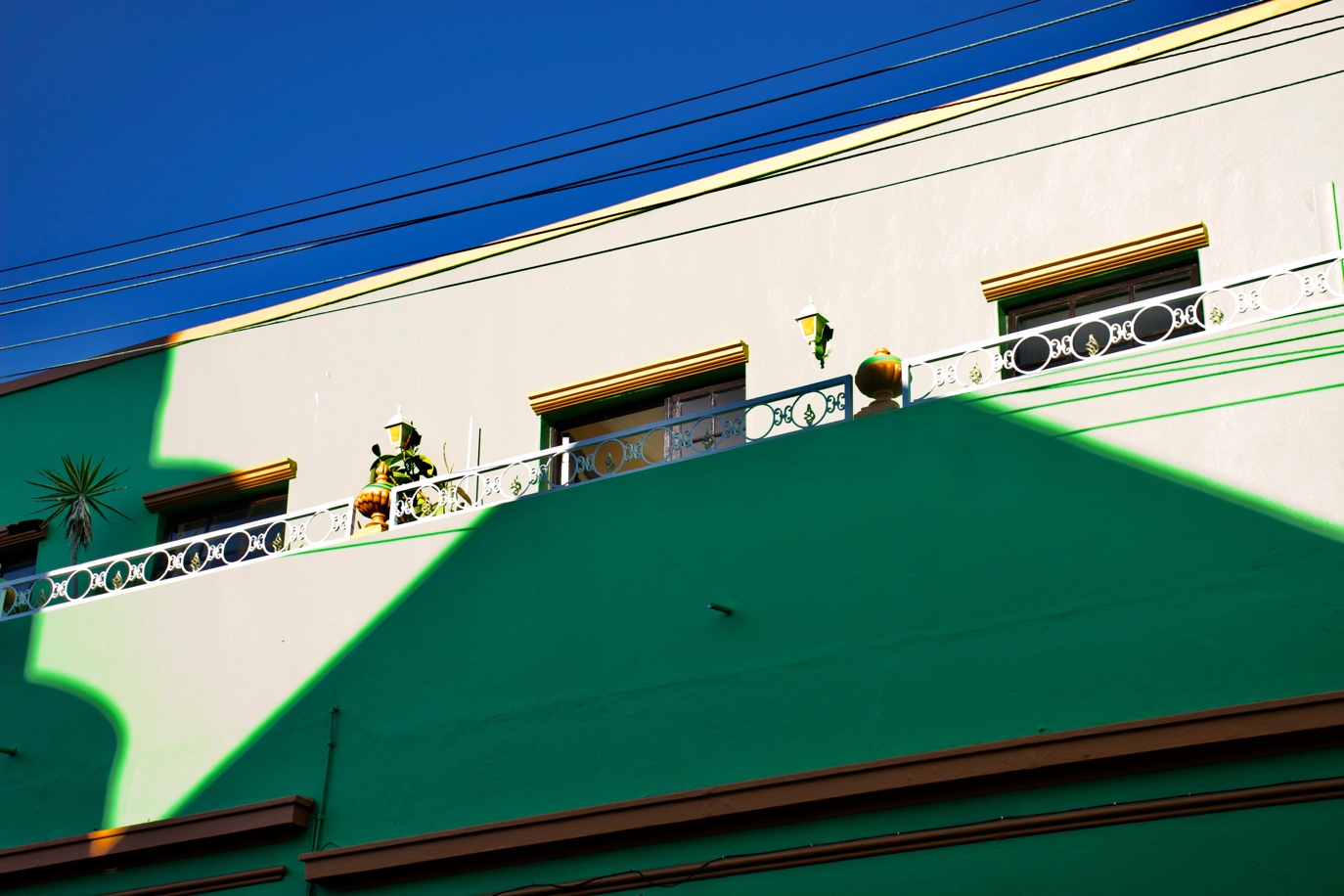
Image Credit Jamie Paul
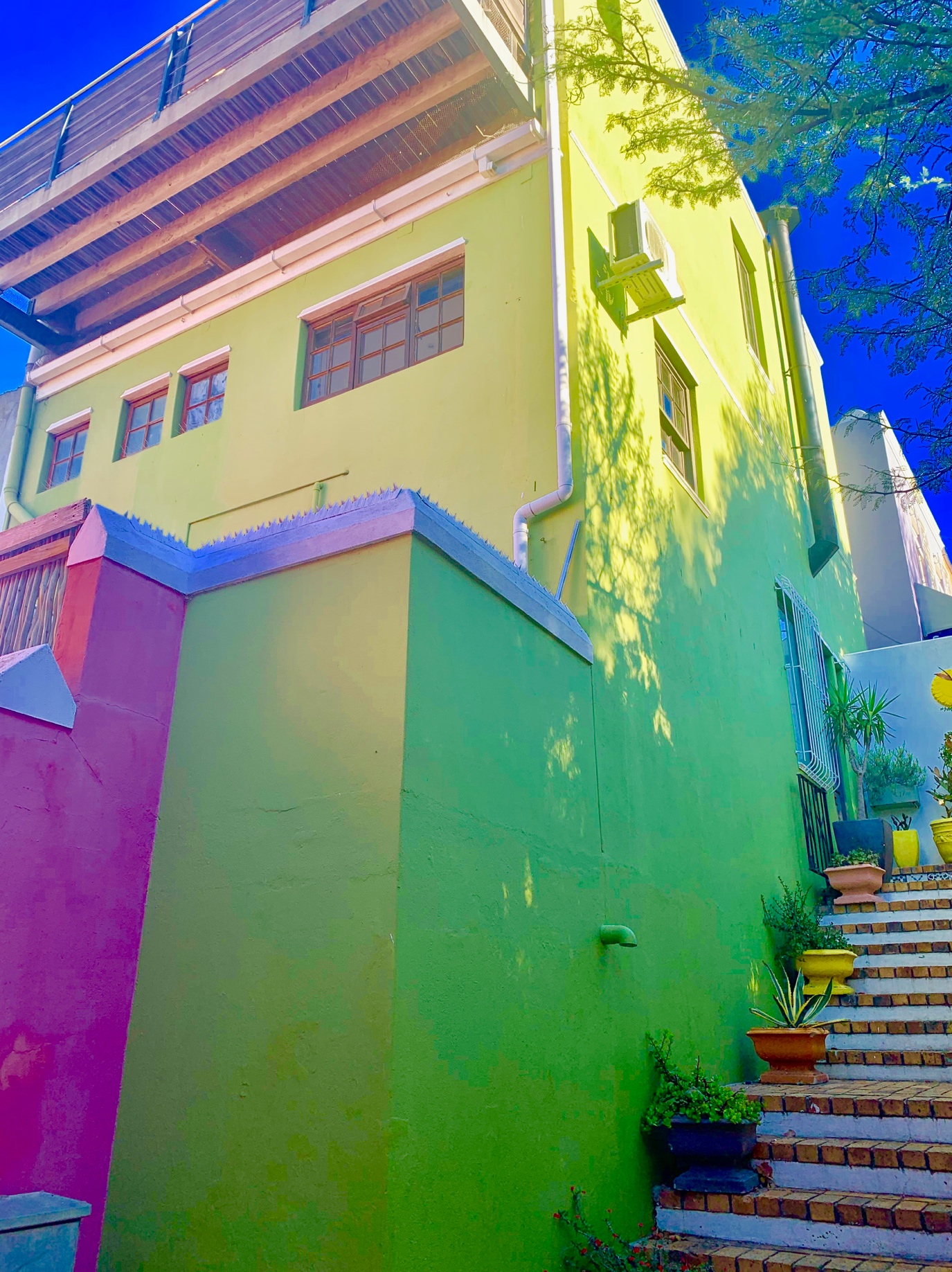
Image Credit Cécile Paul
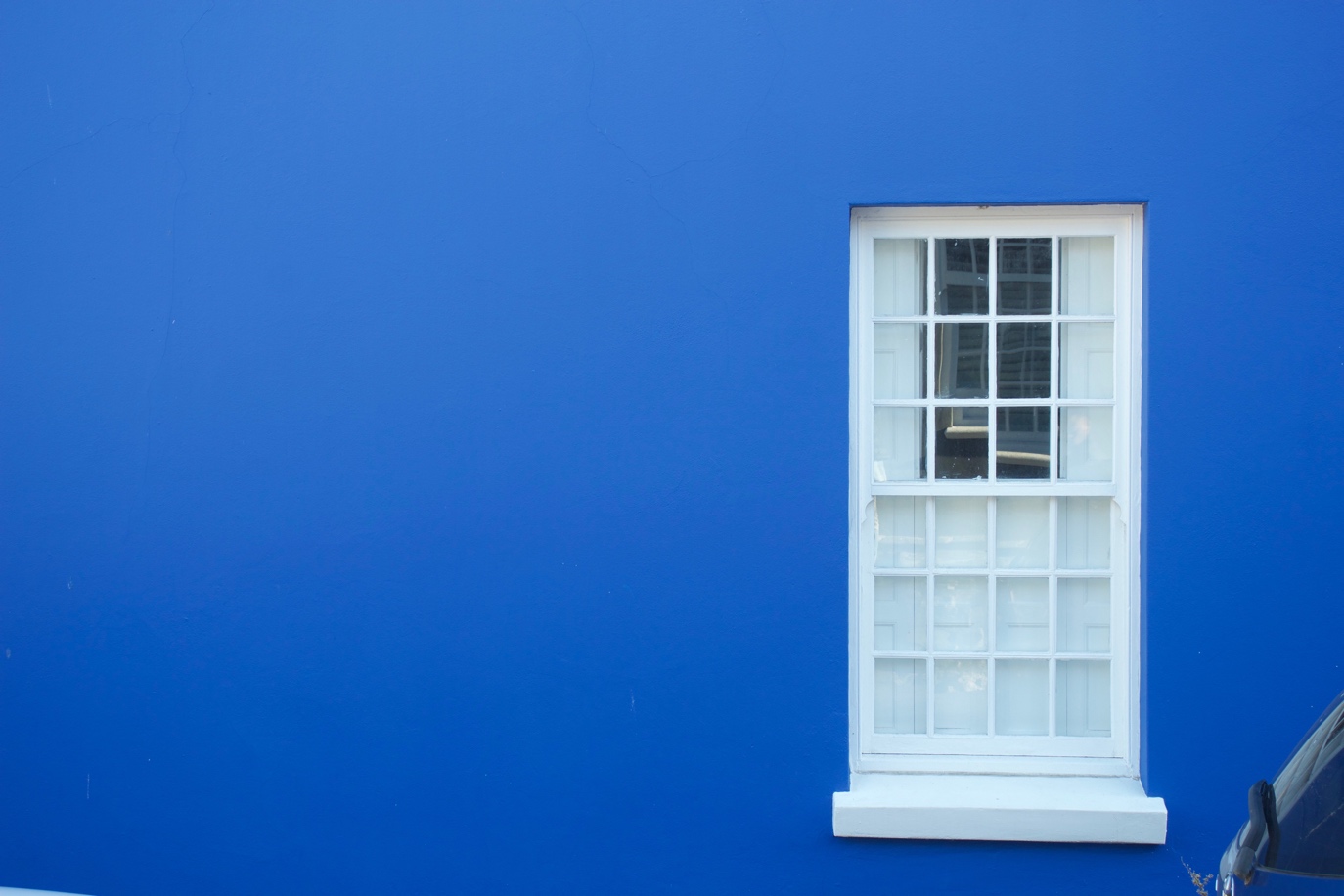
Image Credit Jamie Paul

Image Credit Cécile Paul
Whiffs of dishes like Cape Malay yellow rice made with turmeric and sultanas … tart hot fish curry with tamarind … lamb with cloves, nutmeg and vinegar … all strong yet subtle tastes – irresistibly delicious, wholesome and filling and made for sharing, as has been the tradition for the large families and their culture of generous hospitality over the centuries – await when navigating these quaint cobbled streets. It’s impossible not to succumb to the mouthwatering hospitality on offer while exploring this area.
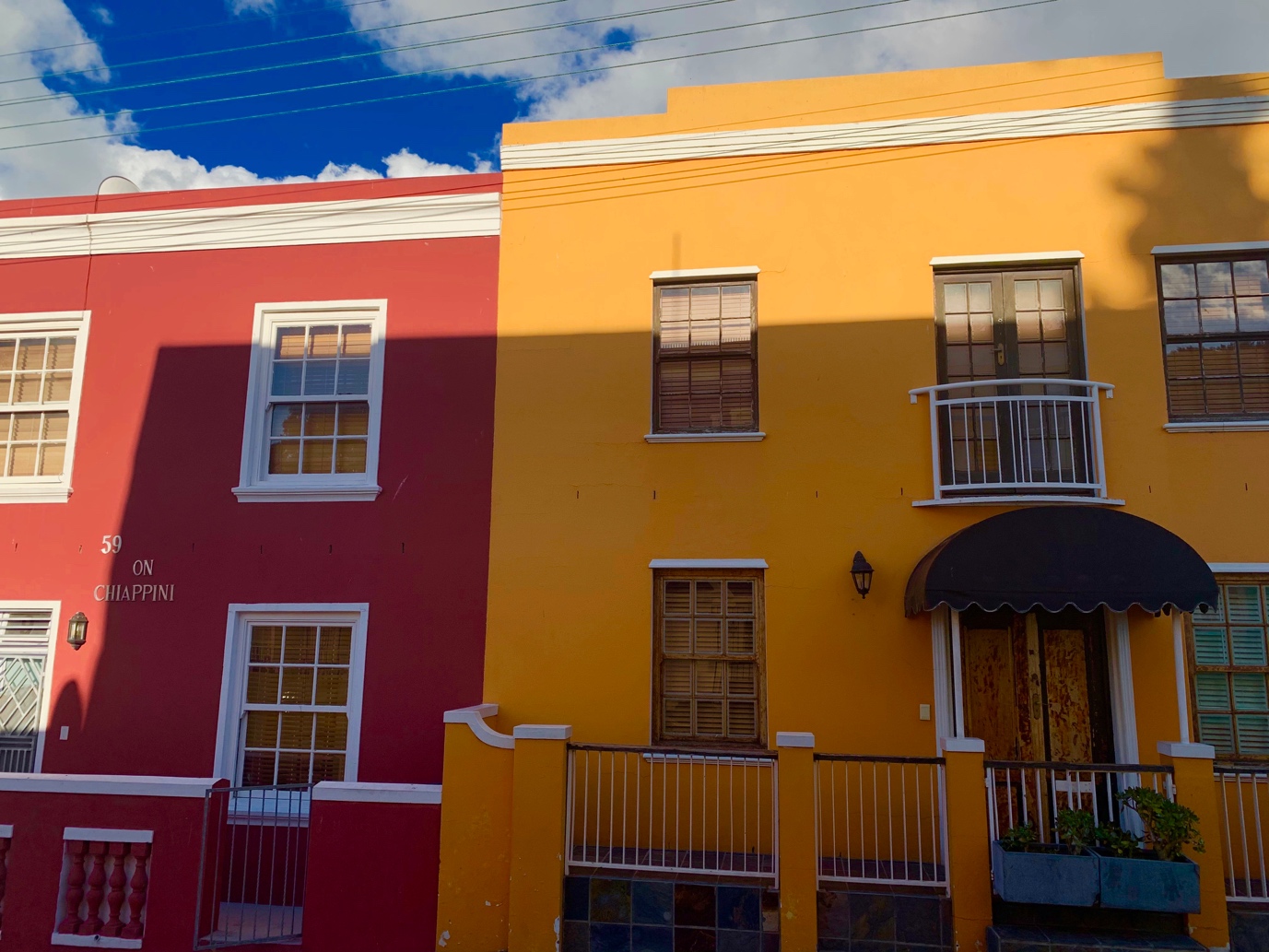
Image Credit Cécile Paul

Image Credit Cécile Paul | Devils Peak peeking out
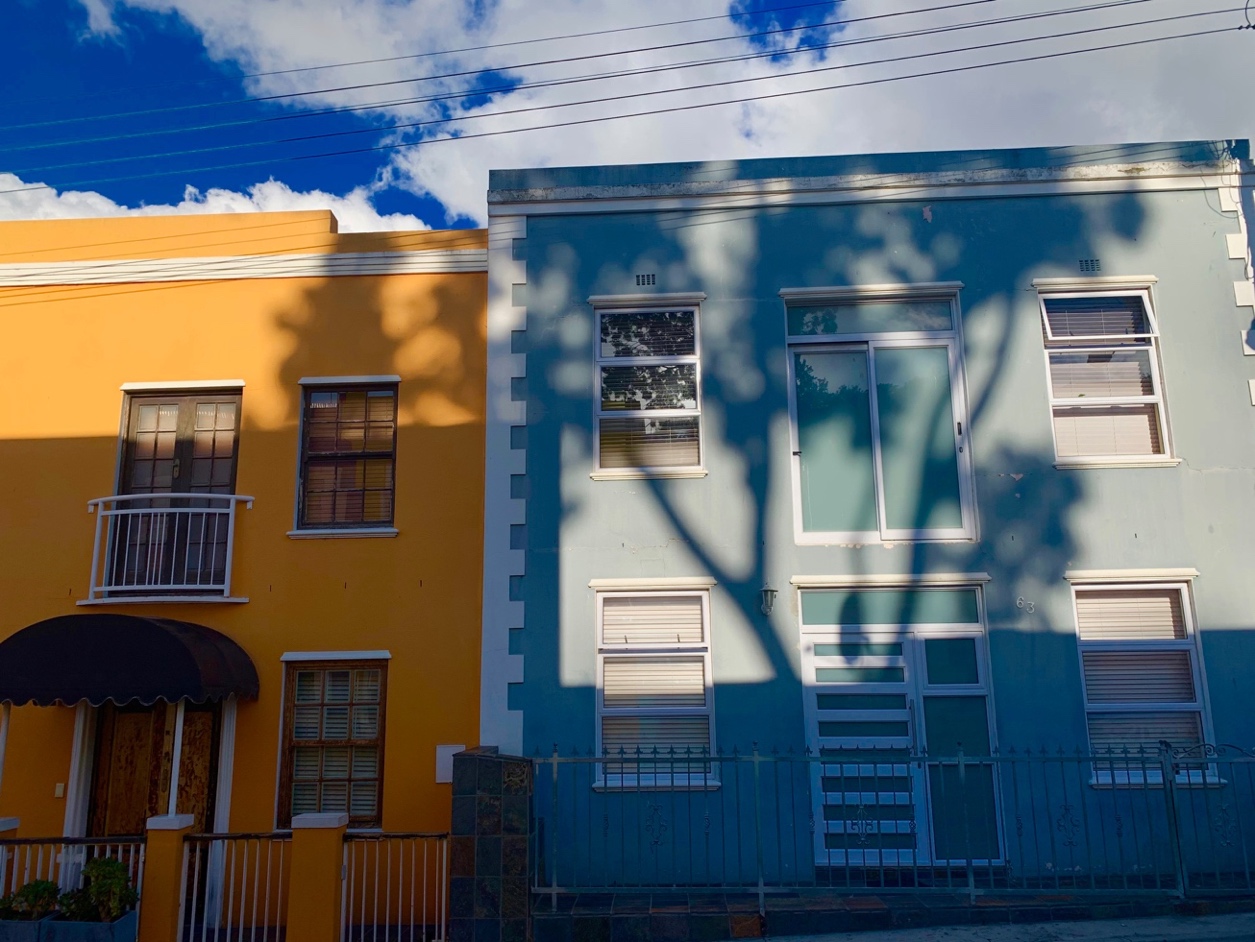
Image Credit Cécile Paul
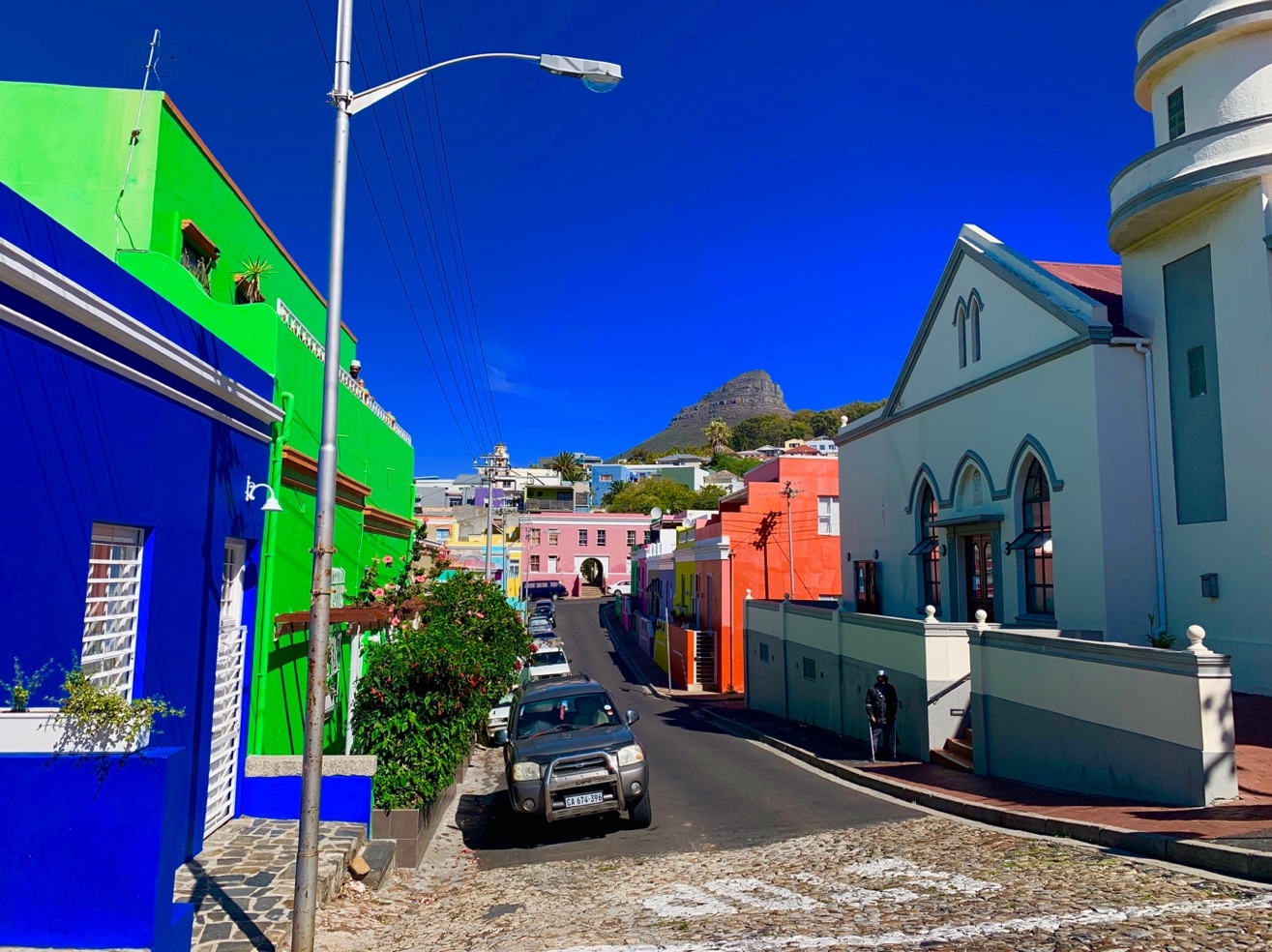
Image Credit Cécile Paul

Image Credit Cécile Paul
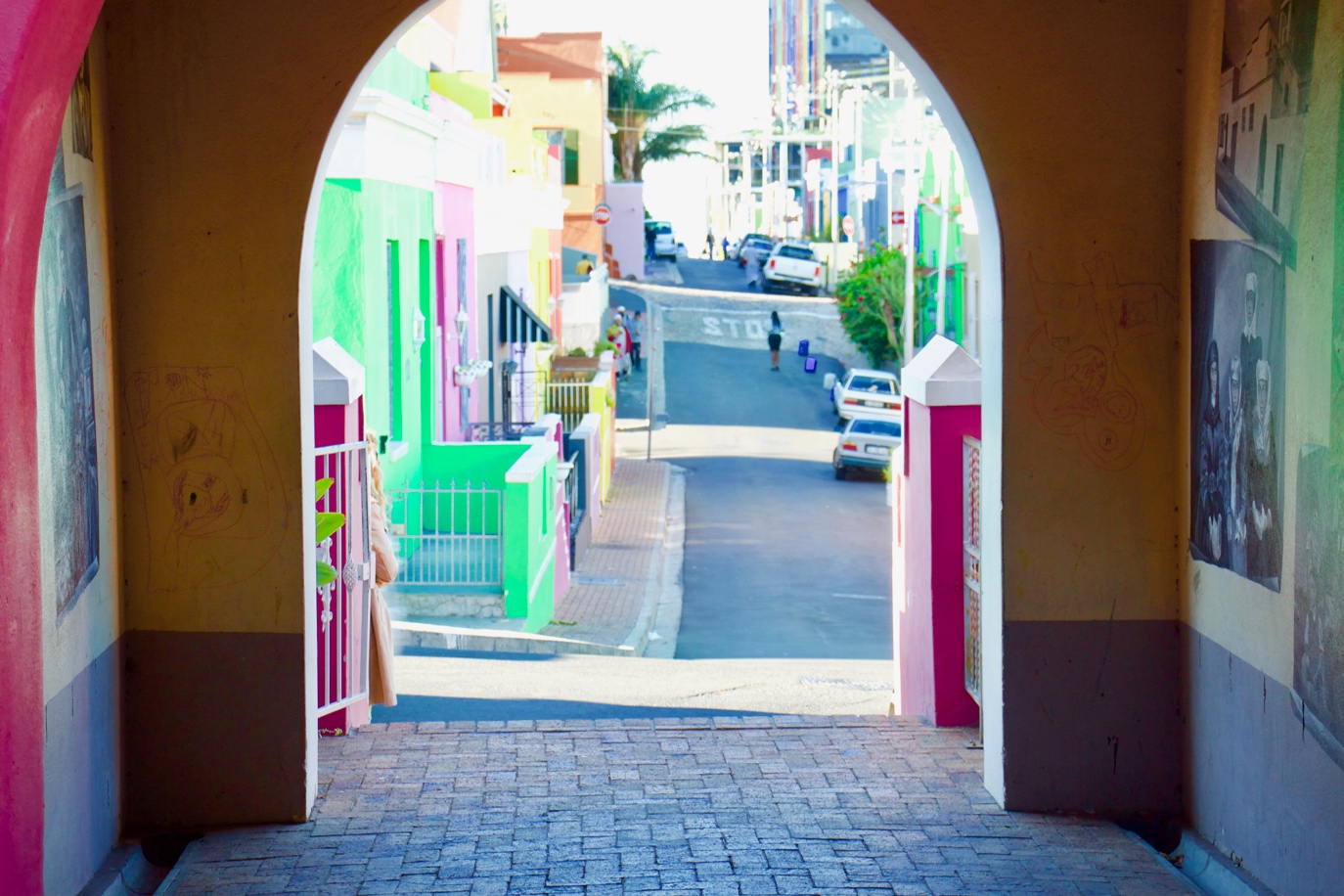
Image Credit Jamie Paul | Narrow, wonky streets with their pastel and primary colour painted houses
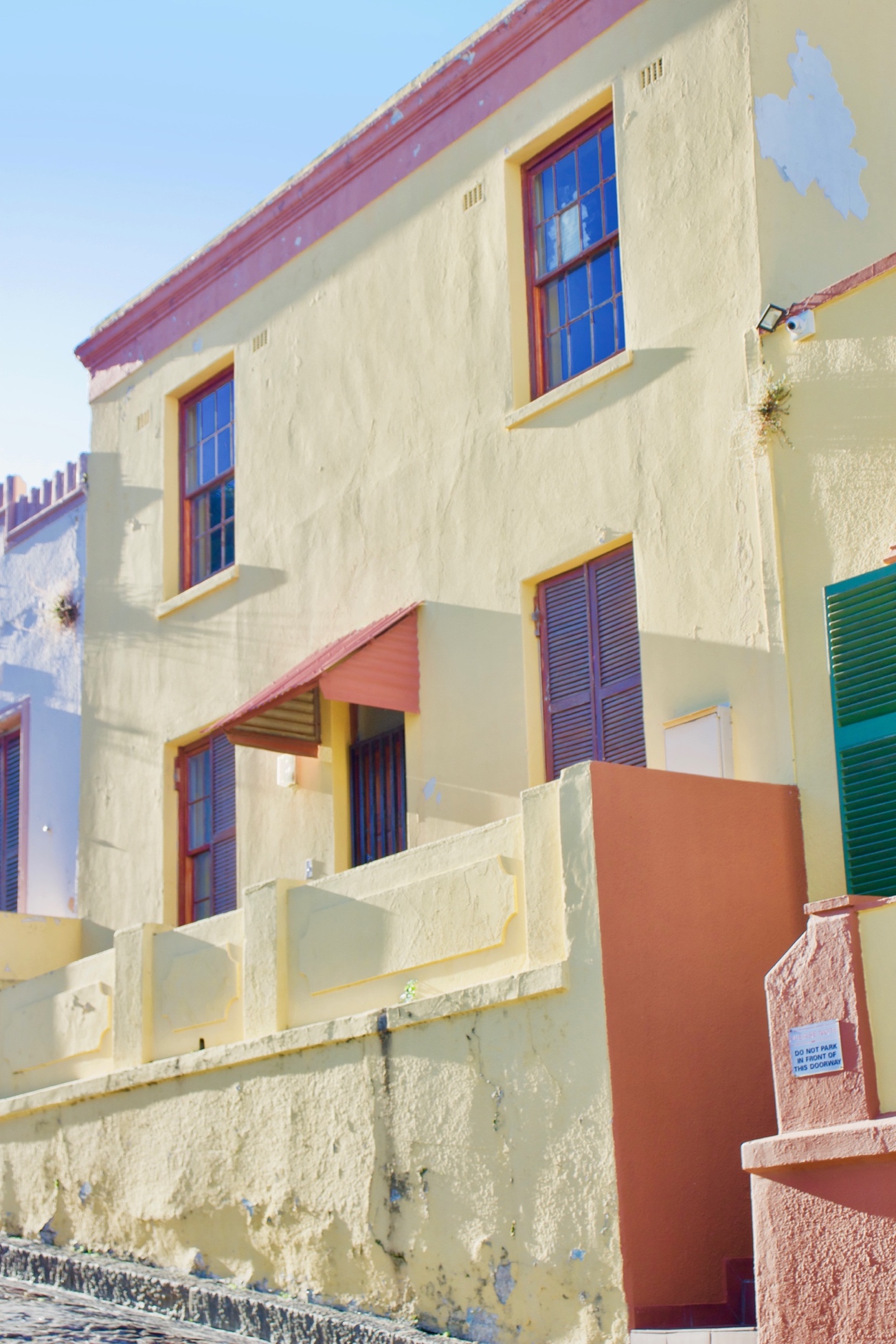
Image Credit Jamie Paul | Some houses are ever so slightly more demure (but probably just waiting for some bright paint to arrive!)
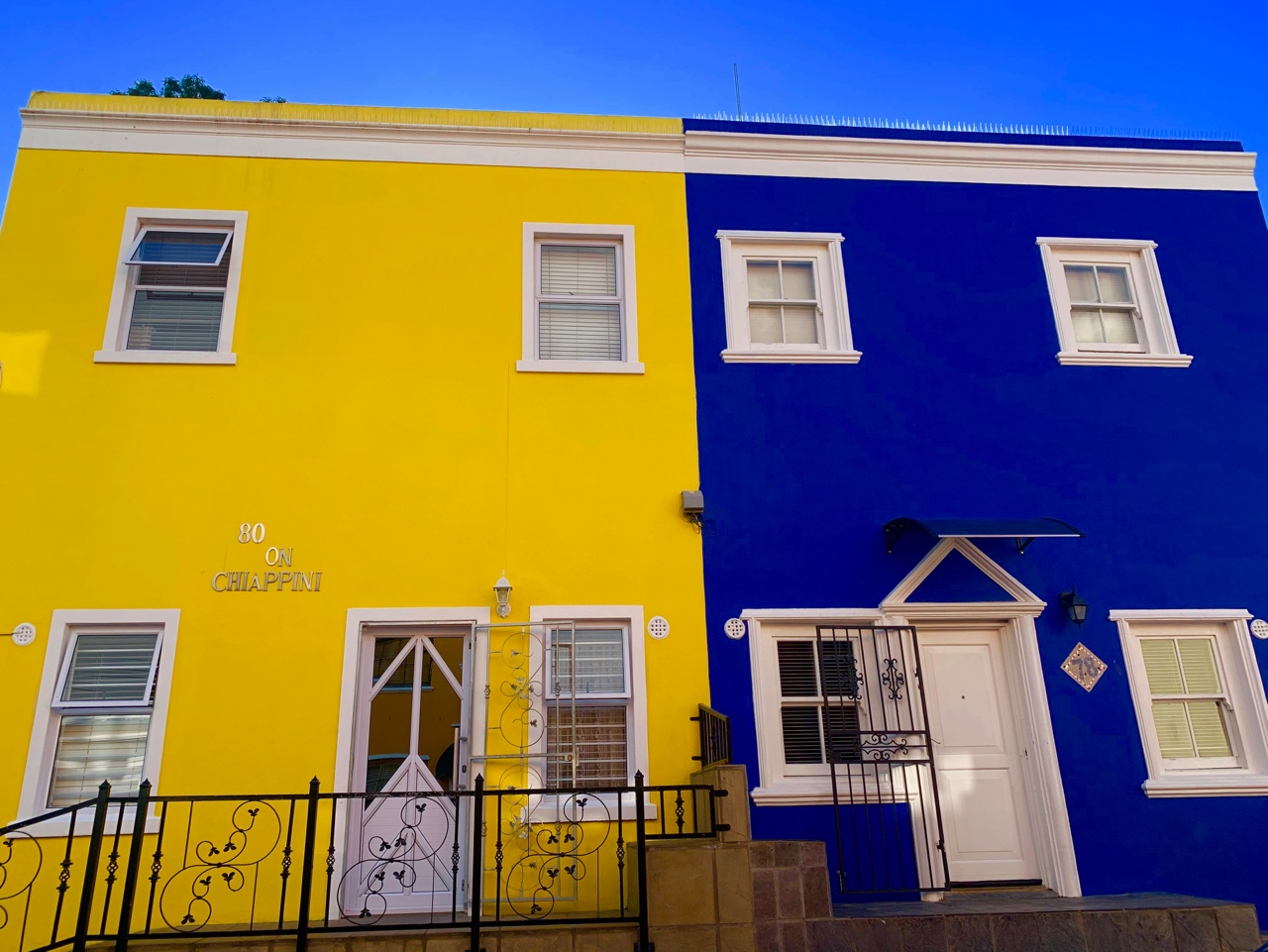
Image Credit Cécile Paul
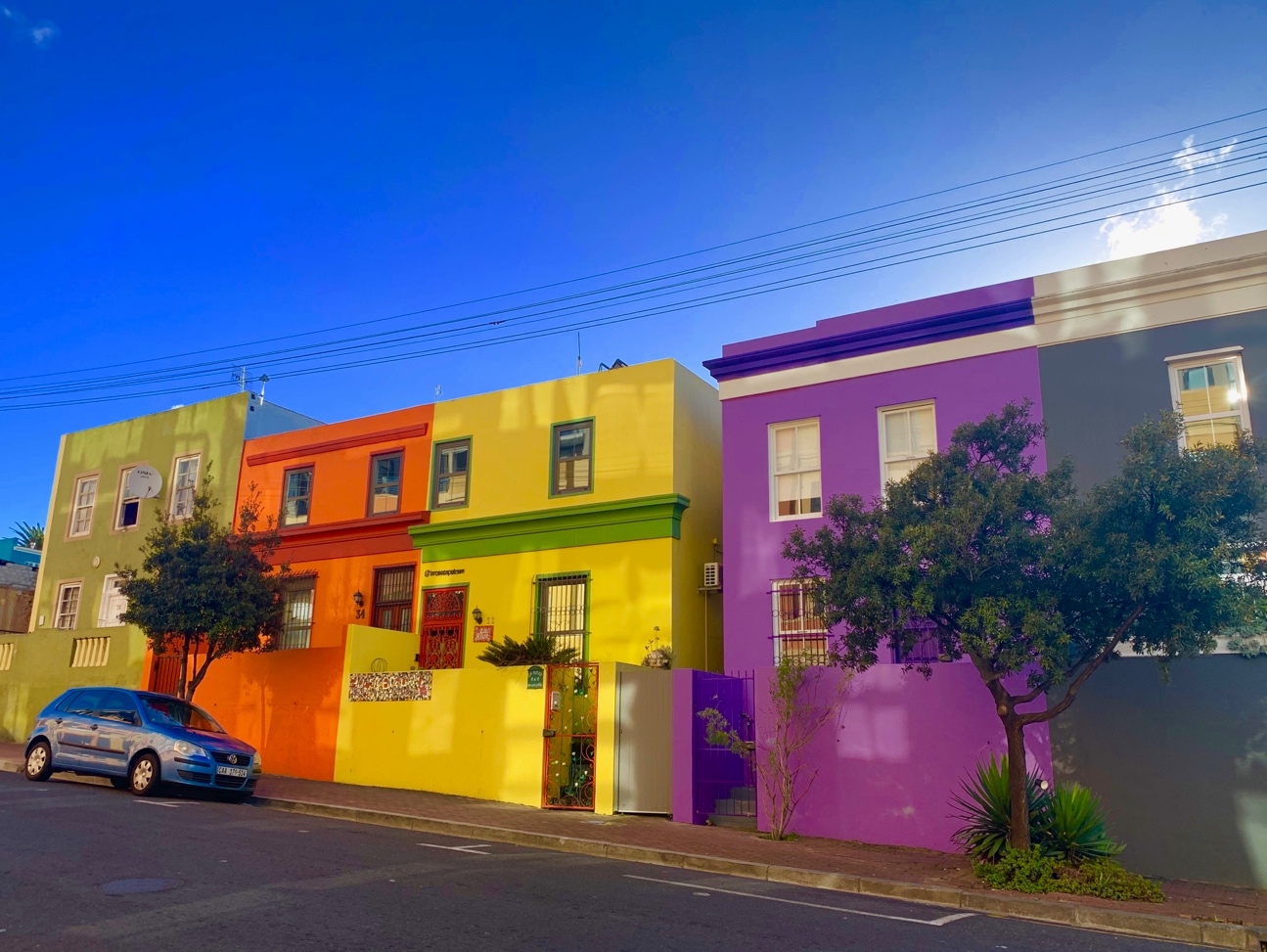
Image Credit Cécile Paul
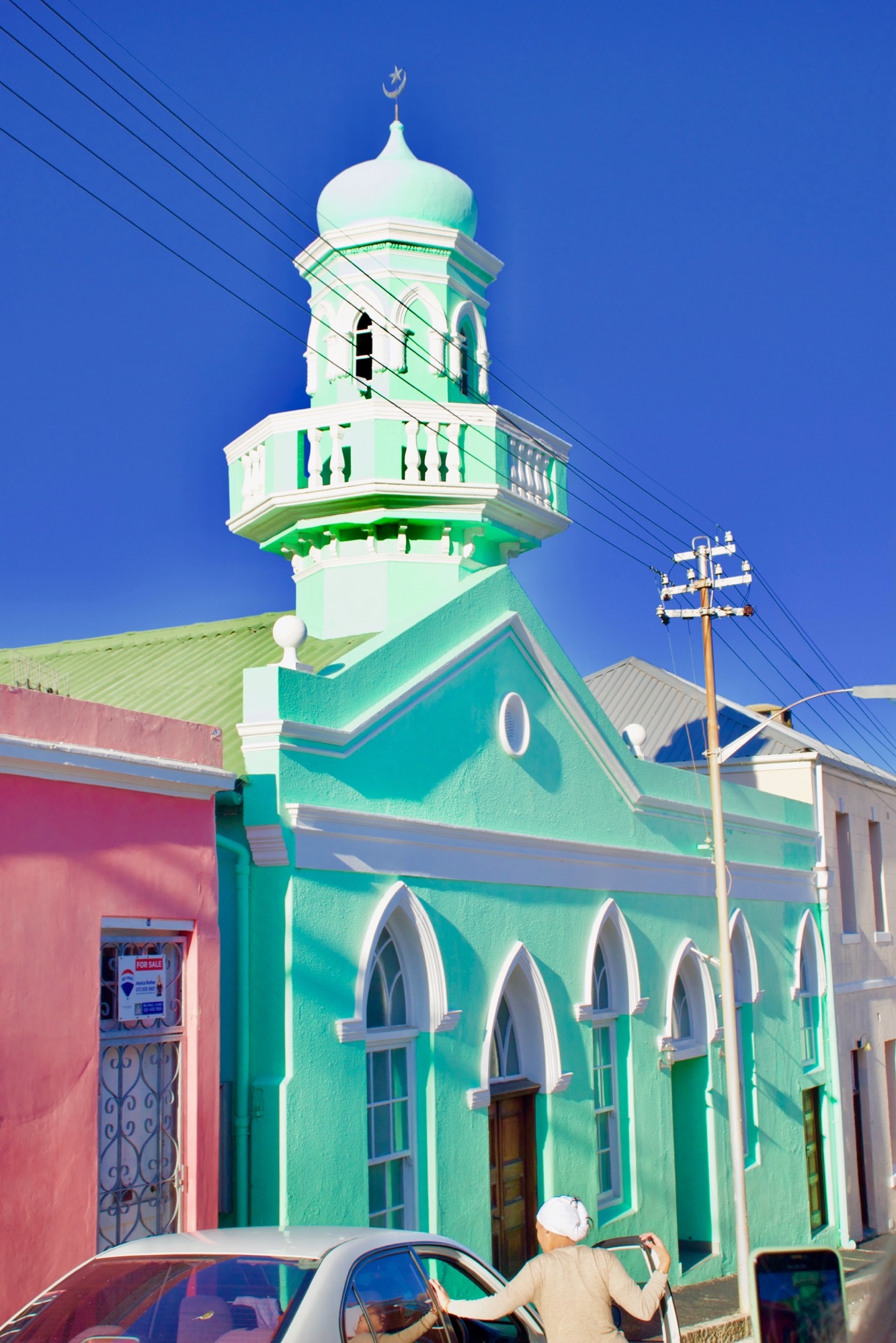
Image Credit Jamie Paul | A mint green mosque, like many, in amongst the houses
Here is a little selection of my favourite spots together with a few recipes to give you a flavour of this inimitable part of town:

Image Credit Cécile Paul | A mural, one of many in the area
Cape Malay Roti and Chicken Curry recipe:
1. Bo-Kaap Kombuis
If you fancy sosatie (kebab) lamb chops, beef frikkadels (meat balls), bobotie (a traditional sweet Malay mince dish), tomato bredie (stew), prawn curry or butter chicken this place is for you.
http://www.bokaapkombuis.co.za/
Cape Malay Vegan Curry recipe:
2. Biesmiellah Restaurant
Taste their samoosas, chilli bites and seafood curries before you indulge in the half moons and other delectable traditional sweet treats.
https://www.biesmiellah.co.za/
Cape Malay Kool Frikkadel recipe:
https://www.youtube.com/watch?v=4WPLBi1jzeo
Cape Malay Koesister recipe:
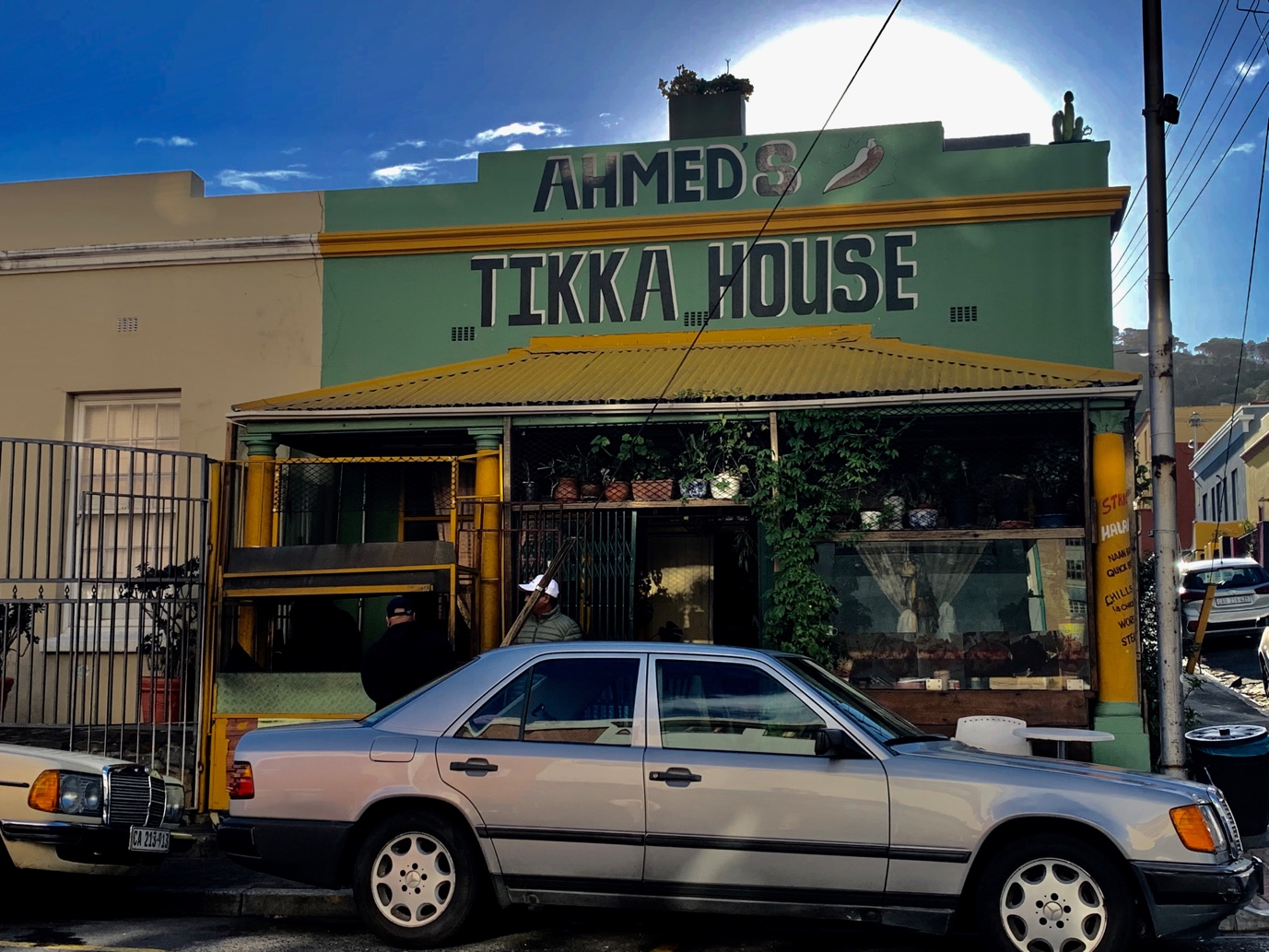
Image Credit Cécile Paul | A typical little eatery in the Bo-Kaap
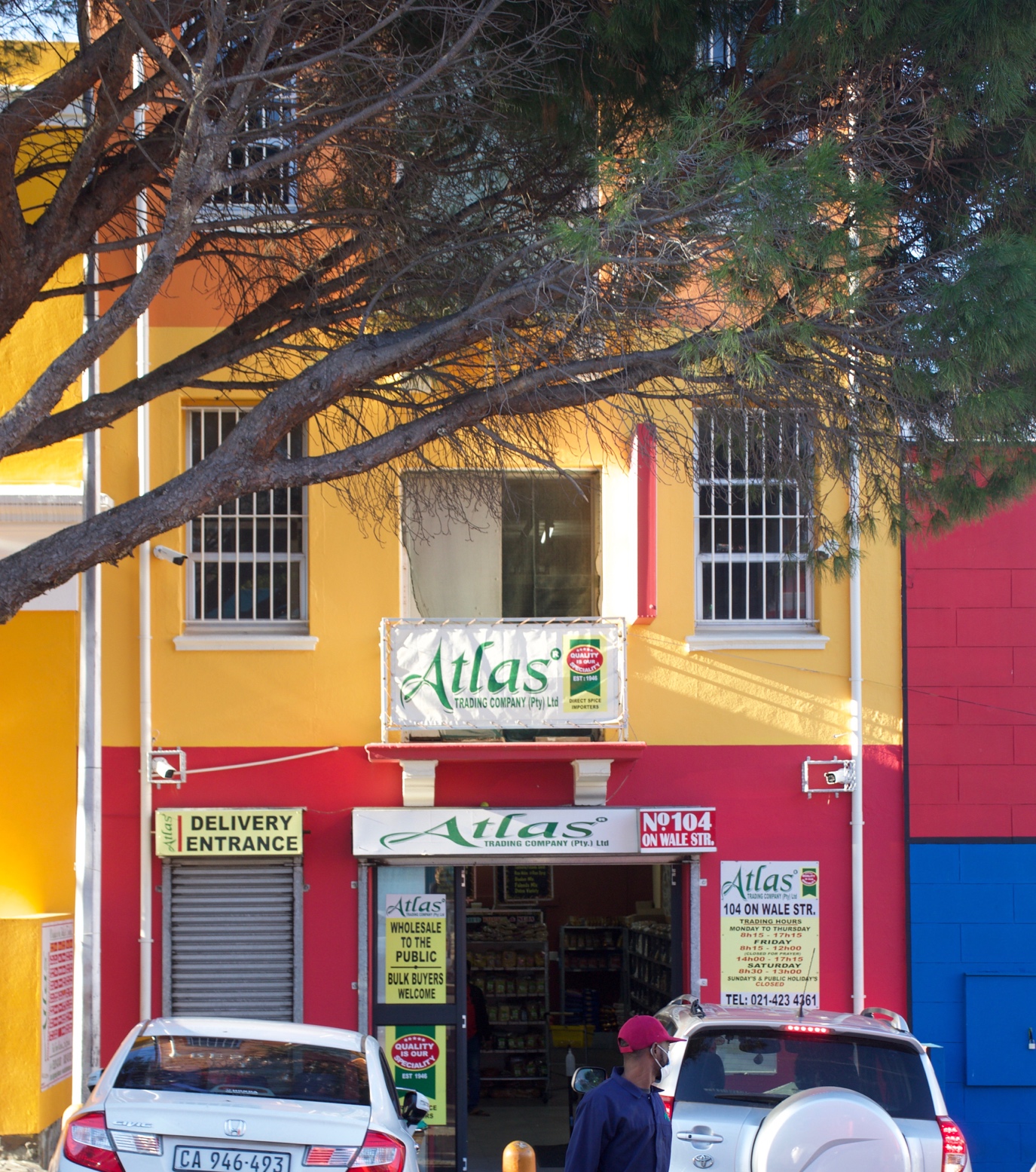
Image Credit Jamie Paul | The city’s spice emporium – Atlas Spice
3. Atlas Spice
This extraordinary emporium right in the heart of the Bo-Kaap sells the most extensive range of spices, herbs, beans, tea, dates, seeds and nuts this side of Java!
https://www.atlastradingcompany.co.za/ @atlastradingcompanyza
Here’s a collection of Atlas Spice’s’ favourite Malay recipes:
https://www.atlastradingcompany.co.za/recipes/
4. Rocksole
If you fail to find a sturdy shoe, practical bag or particular shoe lace you’re looking for here, you’re unlikely to find it anywhere else on the planet. This family-run business also repairs any shoe or bag to be as good as new.
https://www.rocksole.co.za/ @RocksoleShoeStore
5. Art du Cap
A marvel of a little art gallery sits right in the heart of the Bo-Kaap, from where its inspiring portraits of people and the Big Five (animals) are on sale together with smaller print-size reproductions and postcards. The author vows that he’s had the pleasure to meet every one of the subjects of his art, including the animals!
http://anthonydeklerk.com/ @Art du Cap
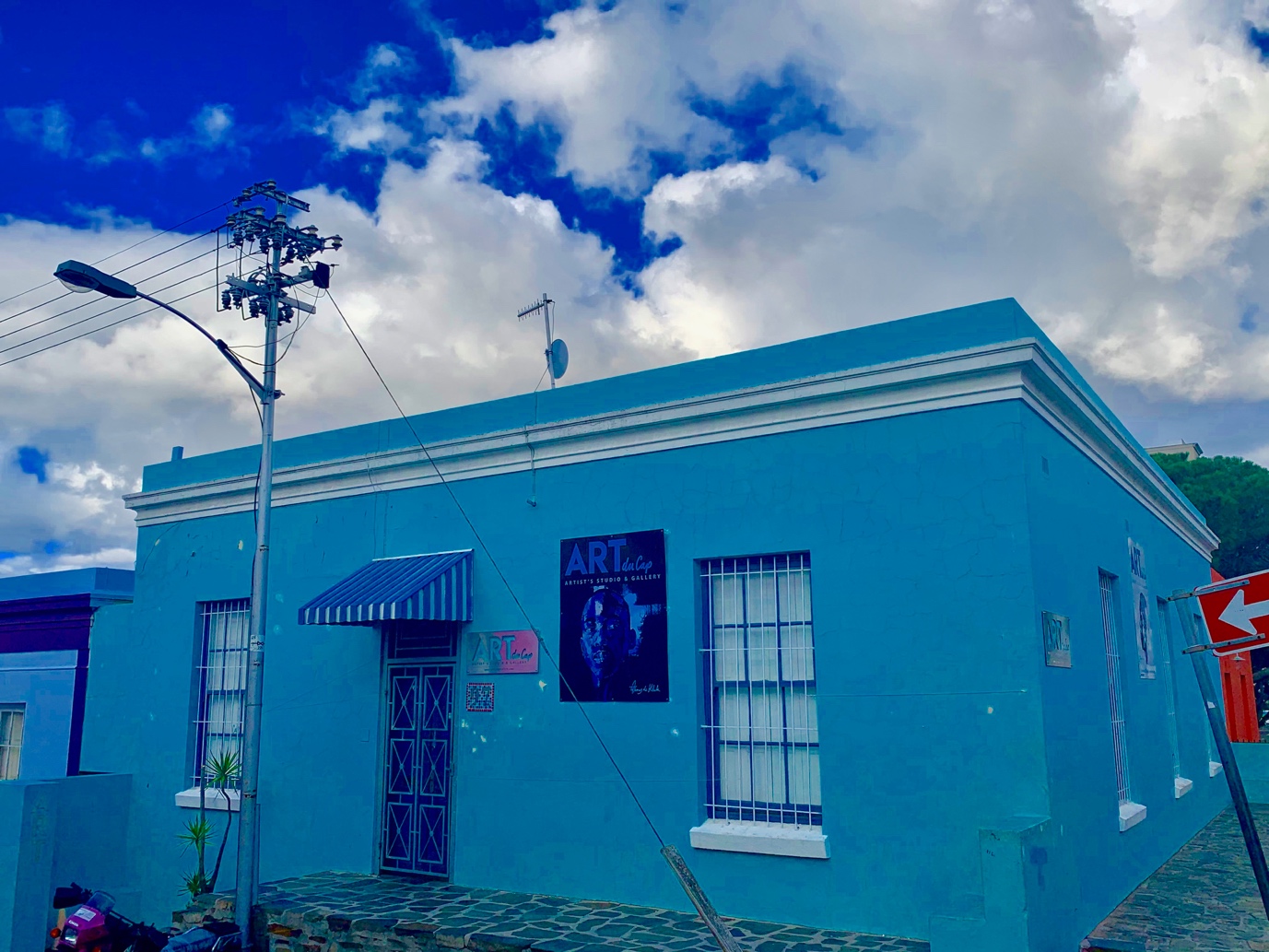
Image Credit Cécile Paul | Art du Cap Art Gallery wraps around a strategic street corner
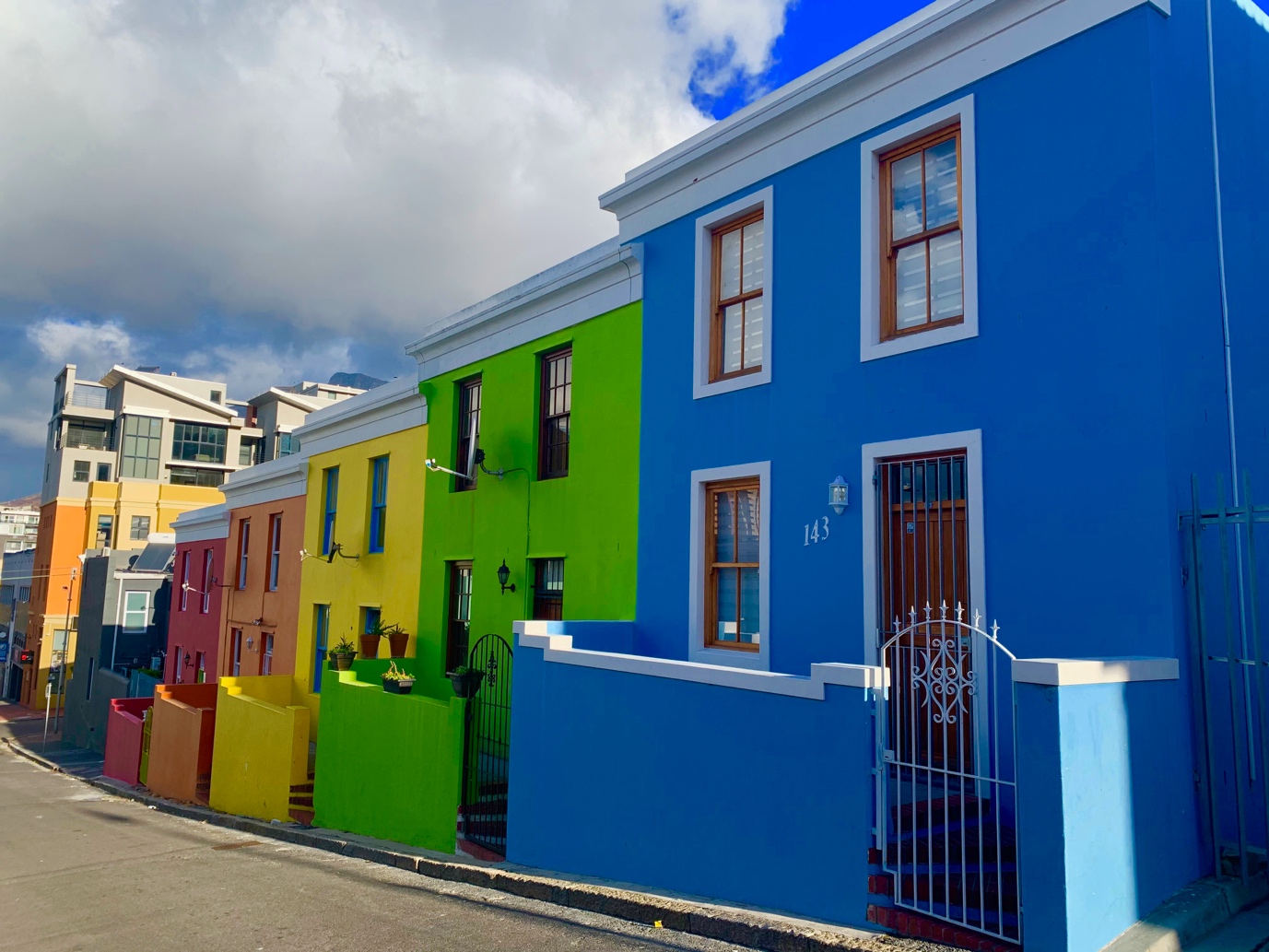
Image Credit Cécile Paul | A typical row of colourful houses in the Bo-Kaap, sitting on a slope
Come and visit this otherworldly little neighbourhood! Come hungry and prepared to eat, drink, walk, converse, marvel at and indulge in a multi-sensory experience.
Oh, and perhaps you want to bring a camera. I suspect you’ll kick yourself if you didn’t.
Just saying.

